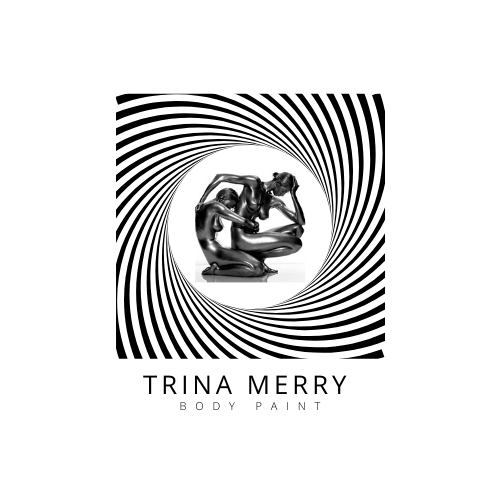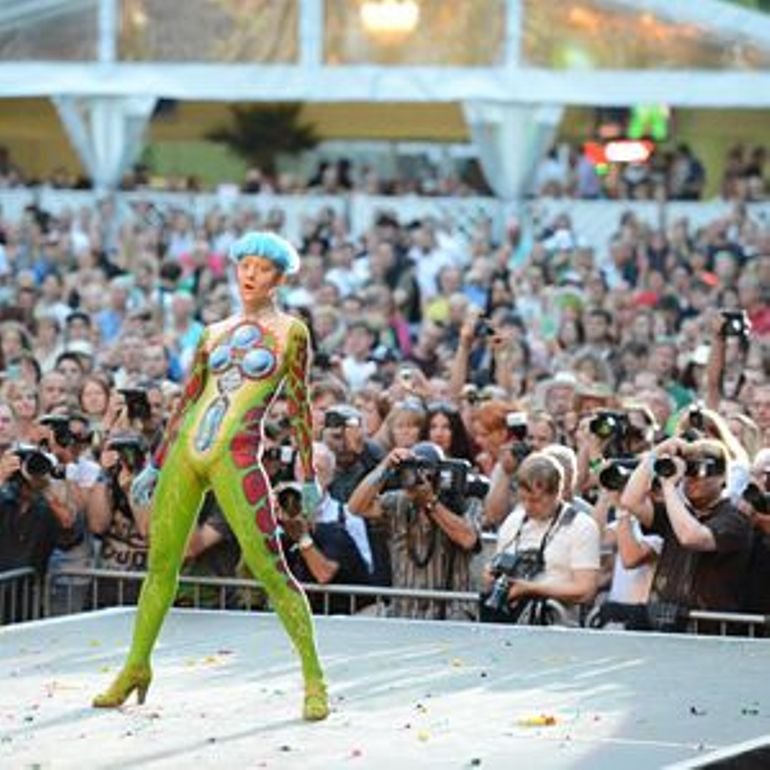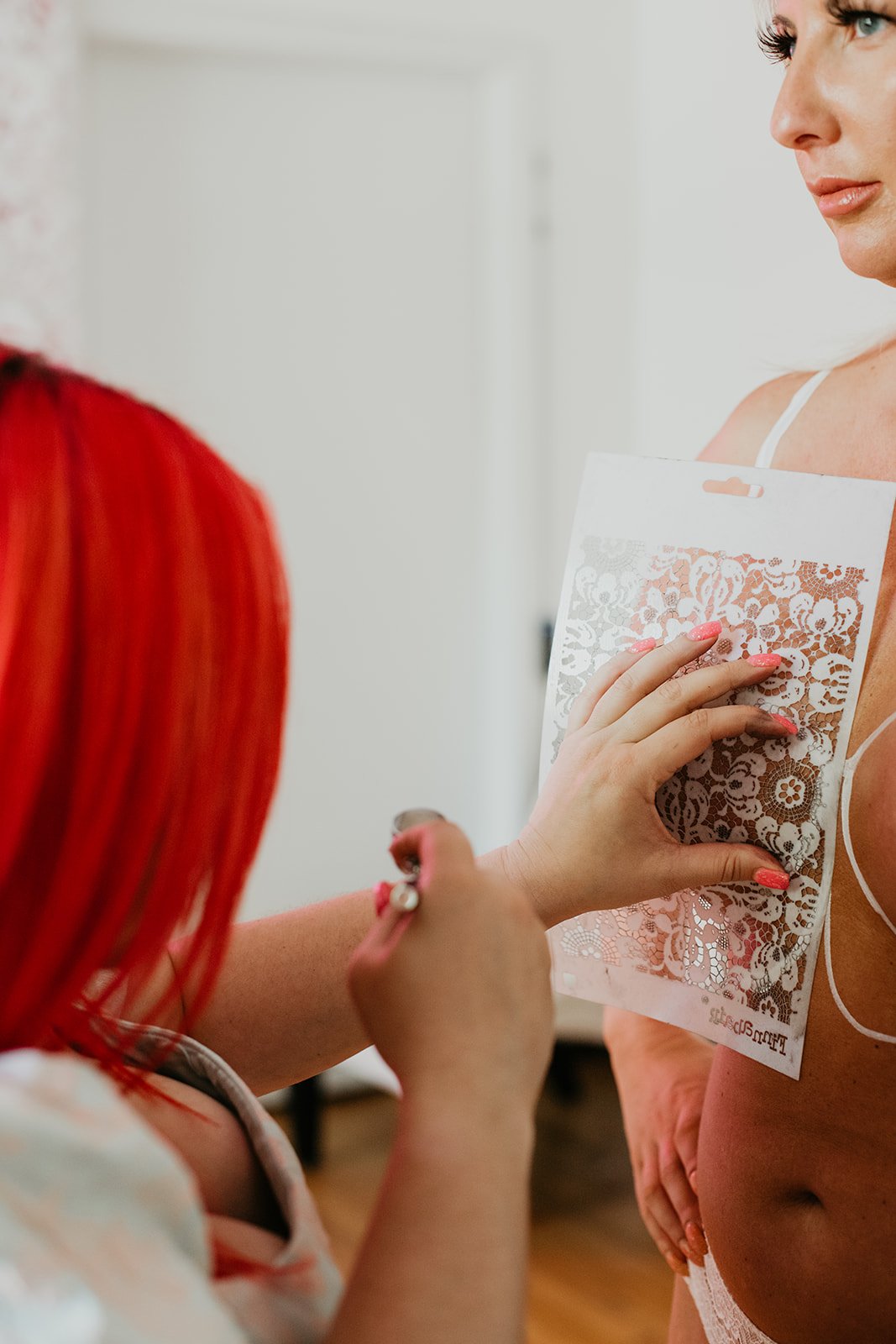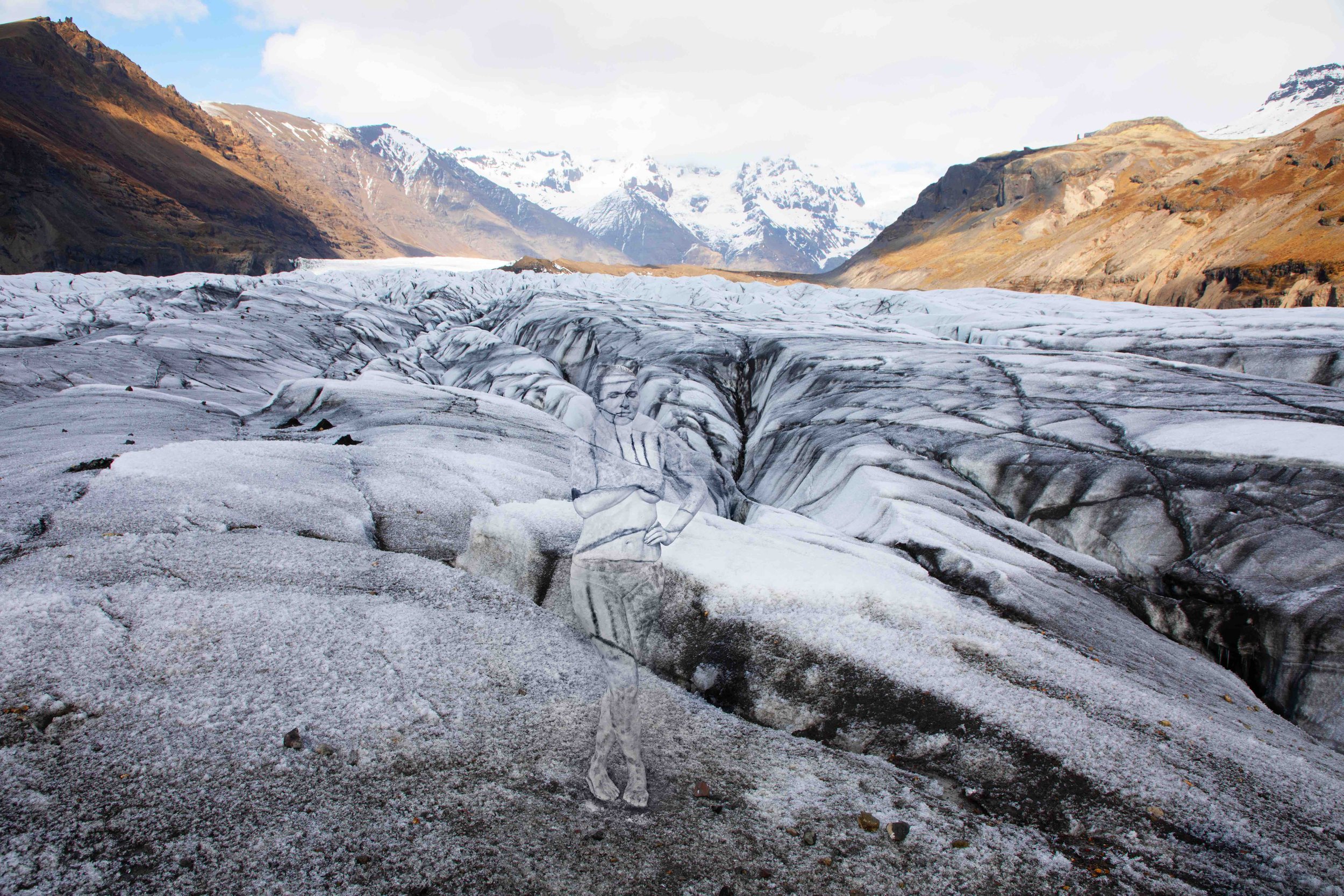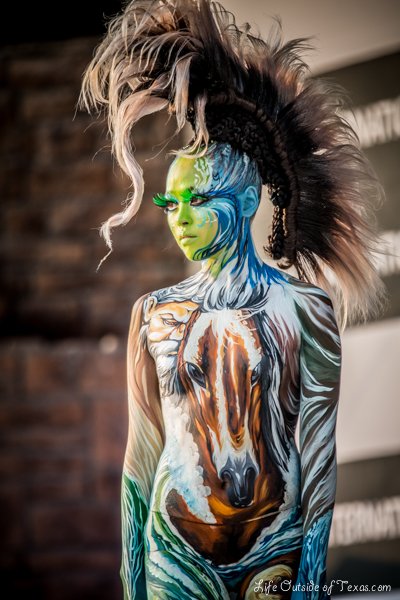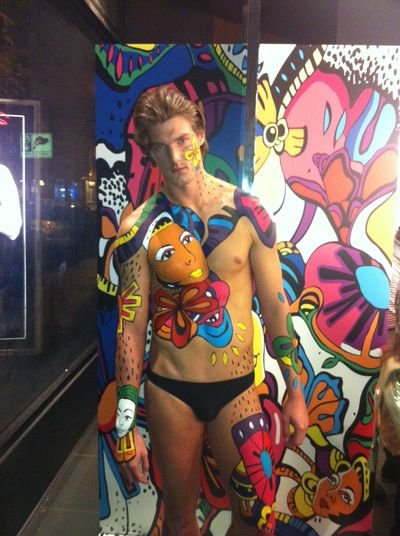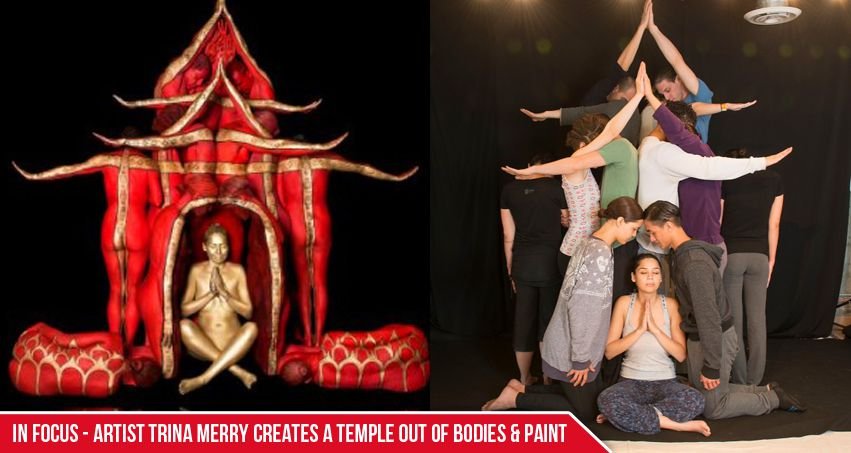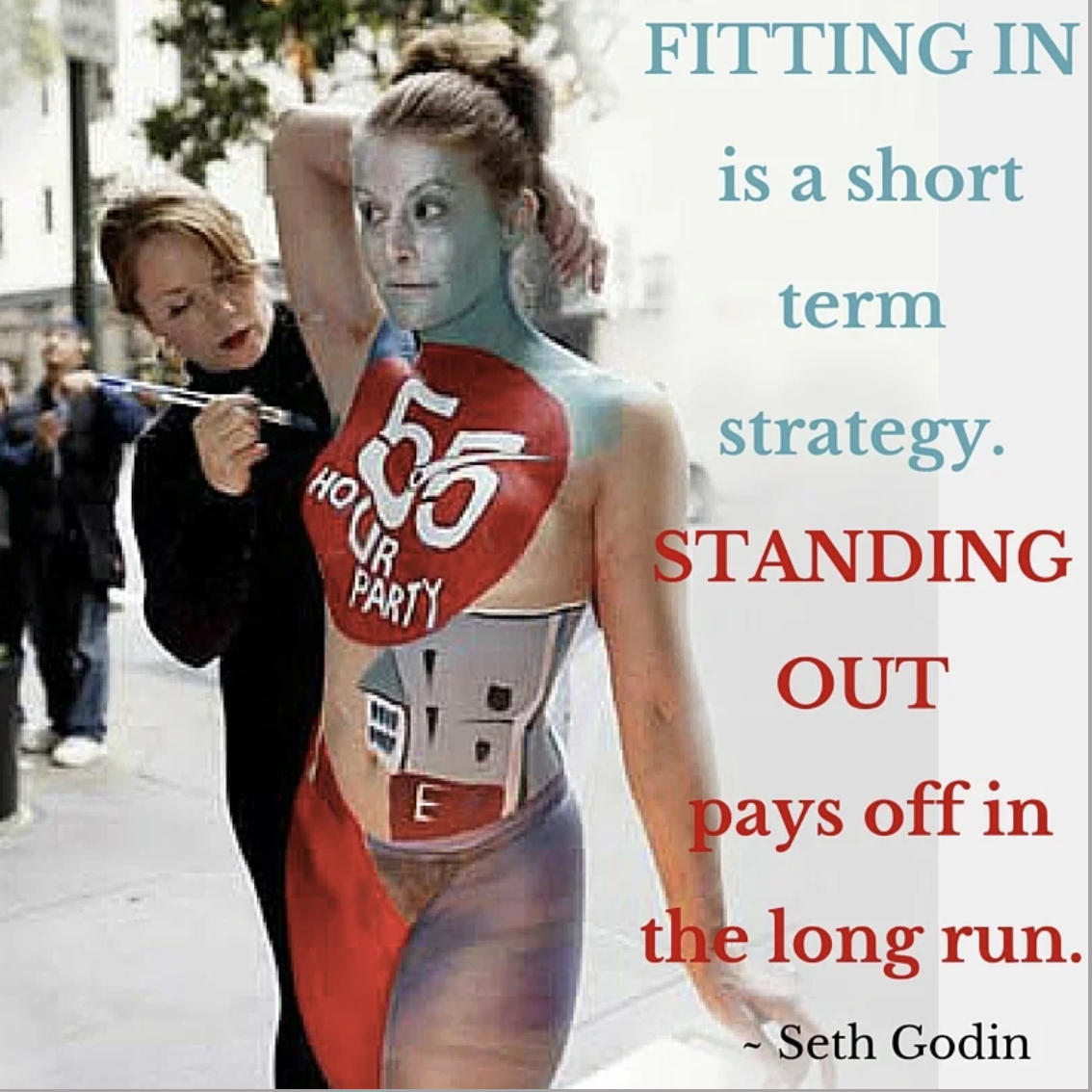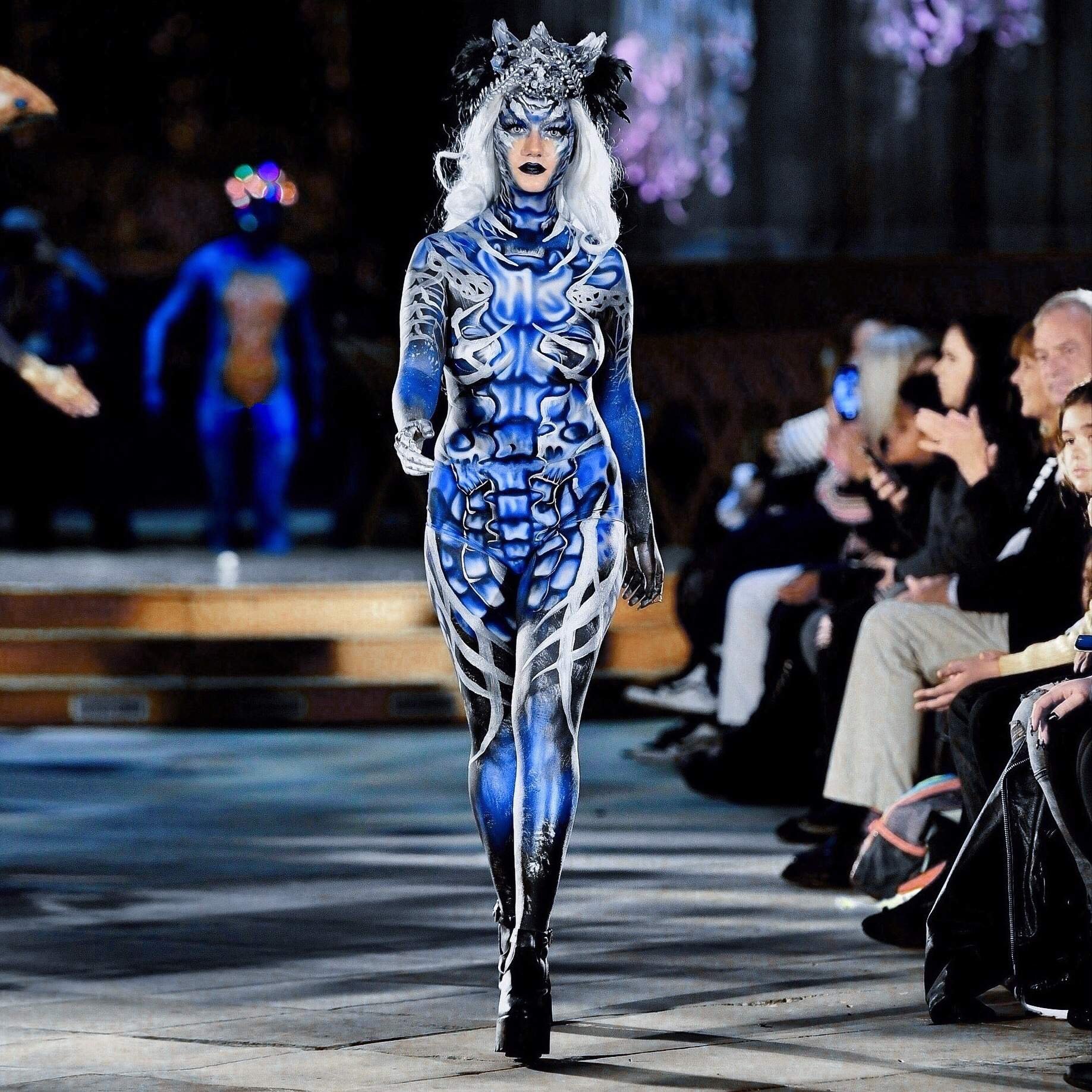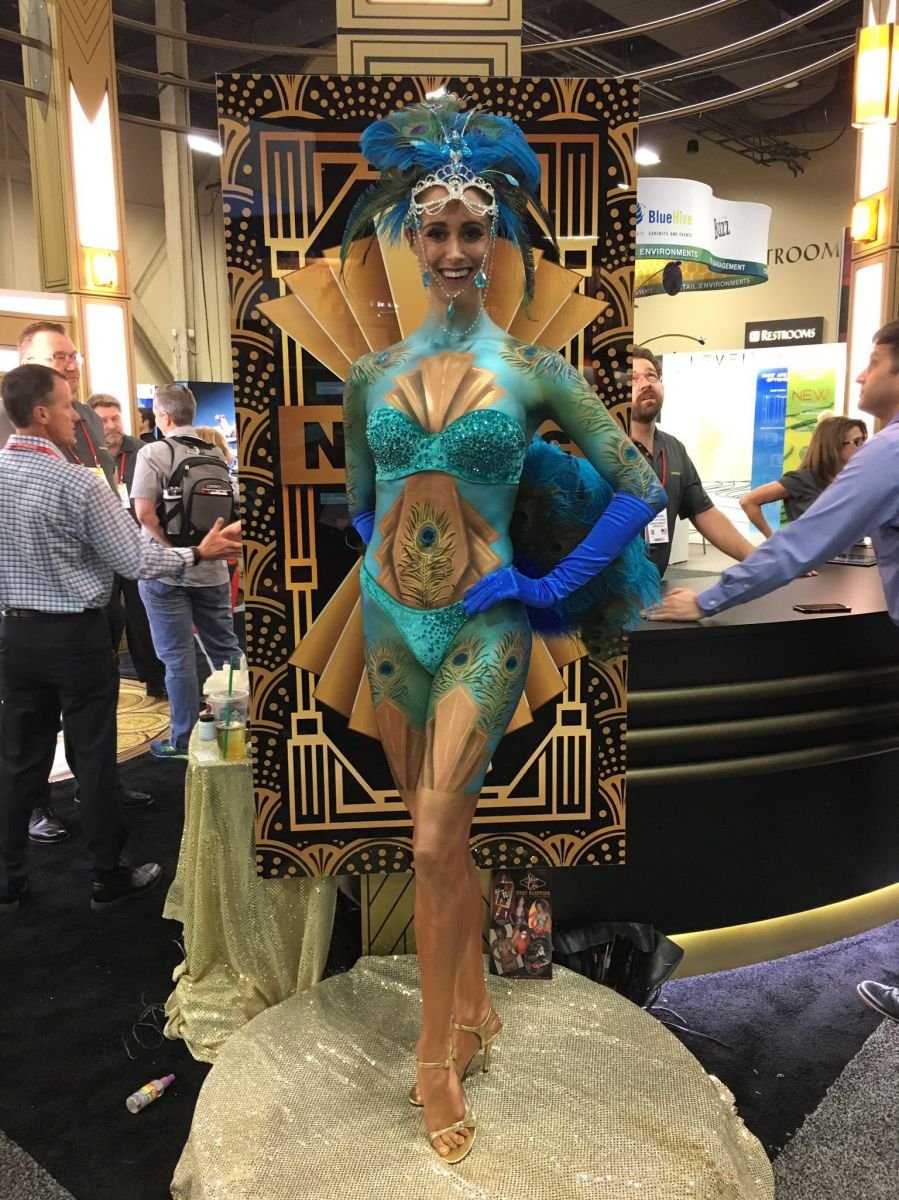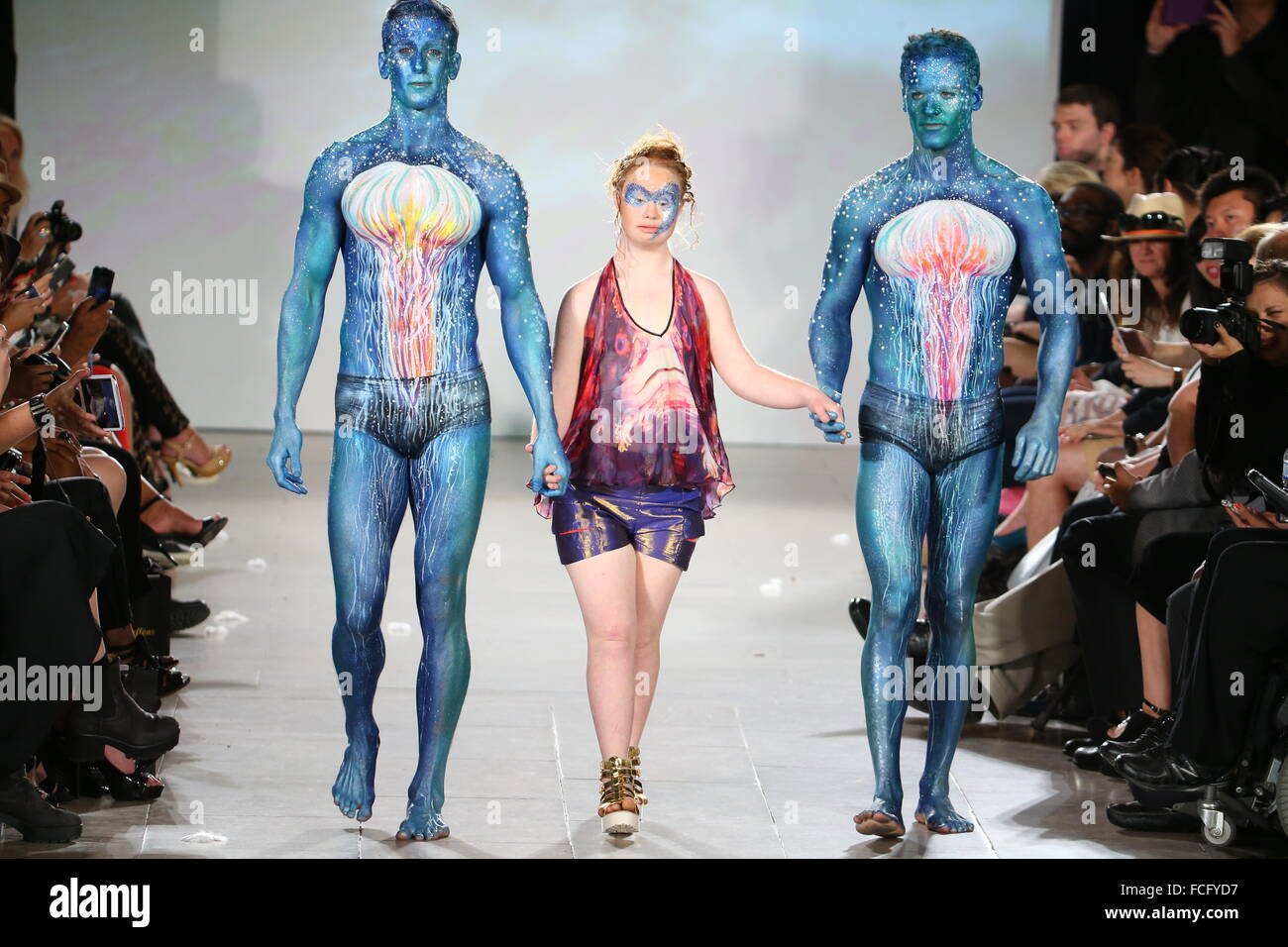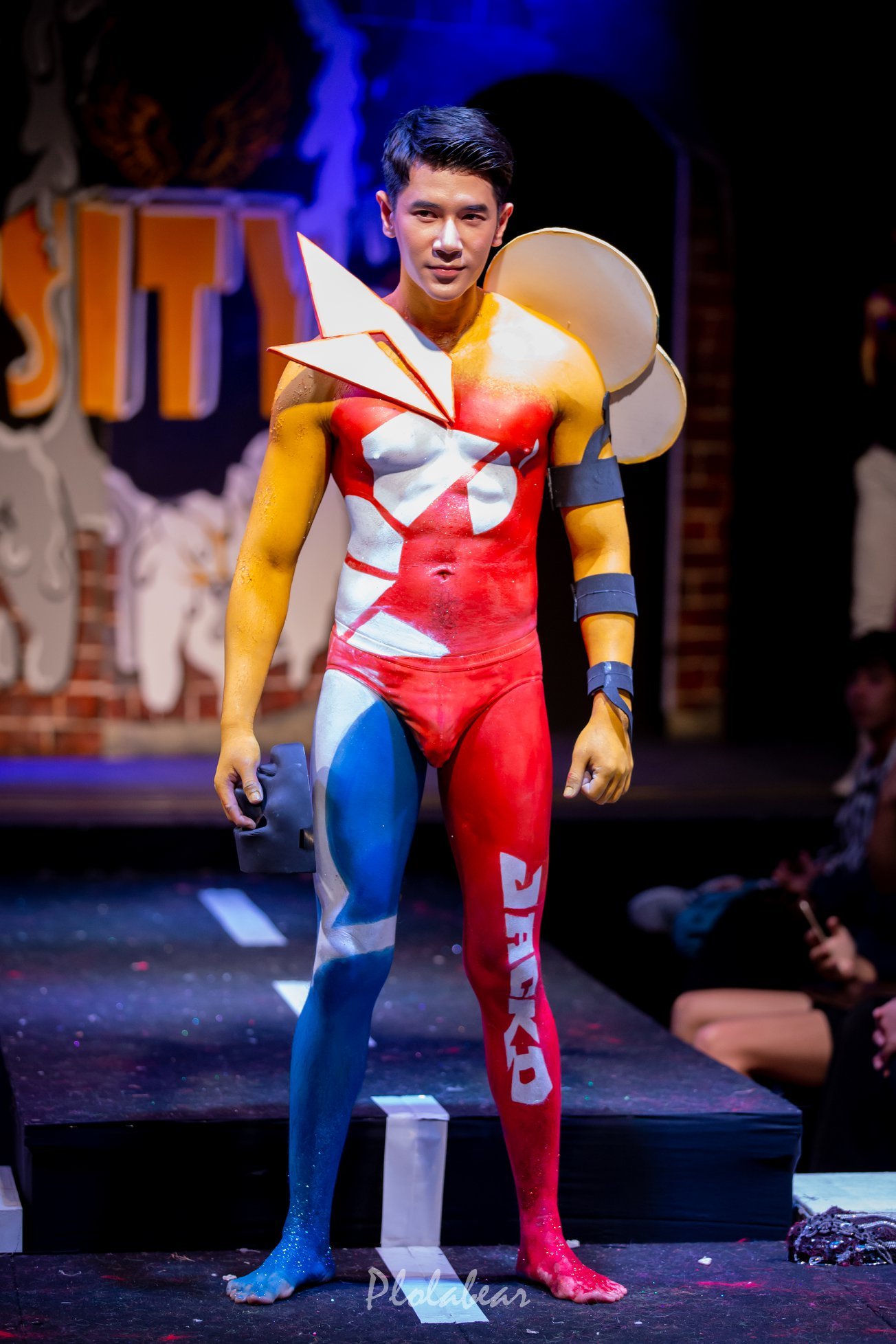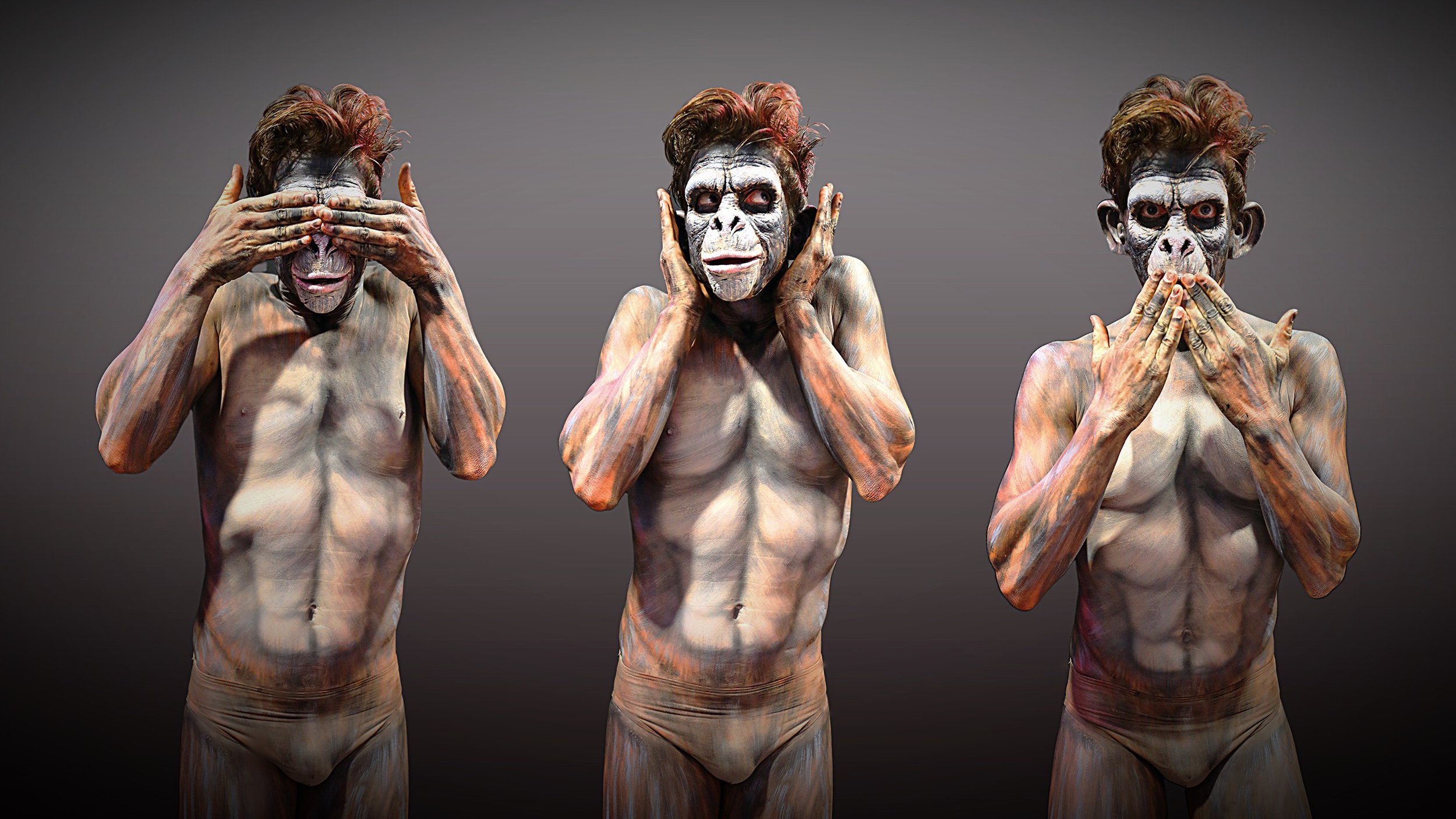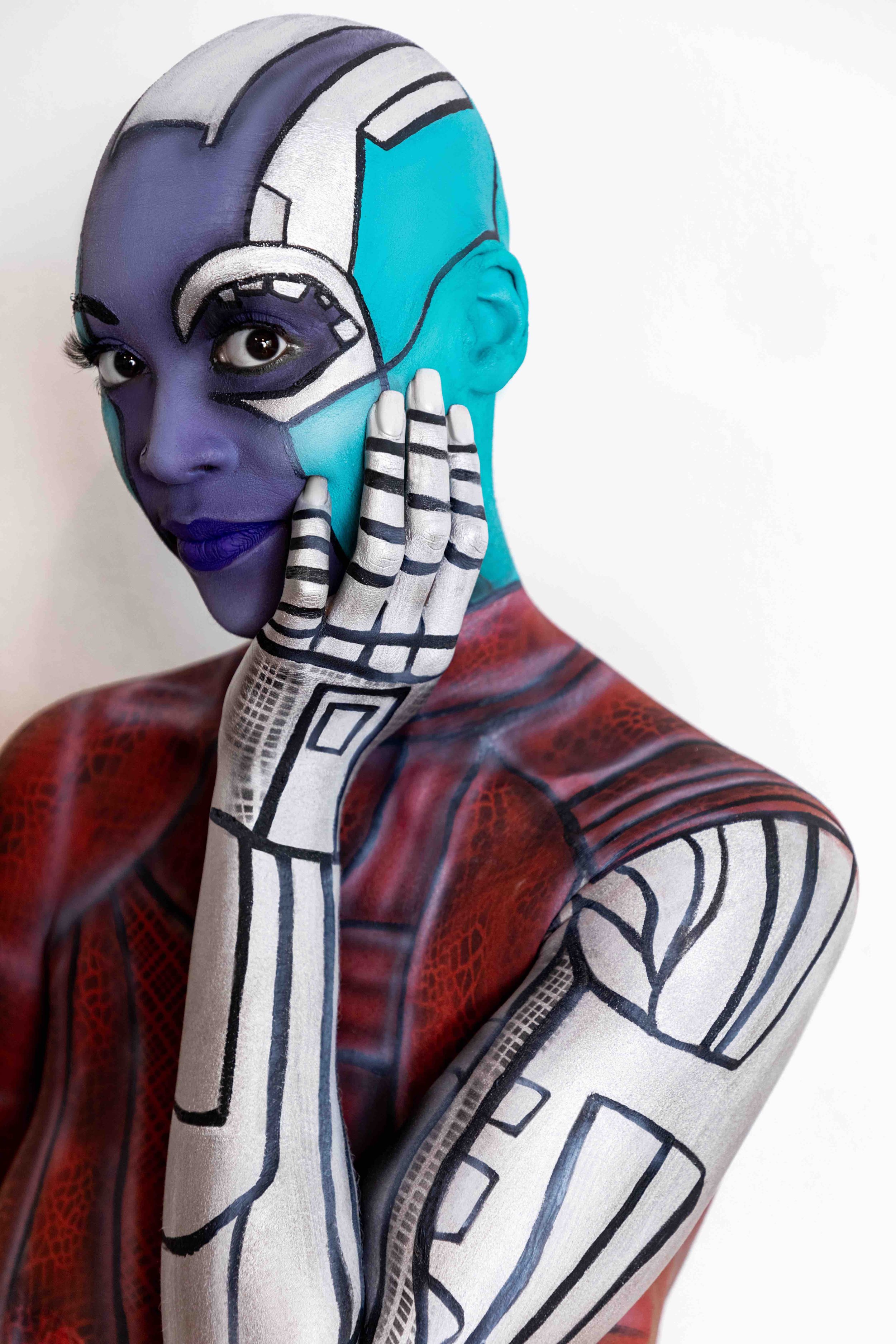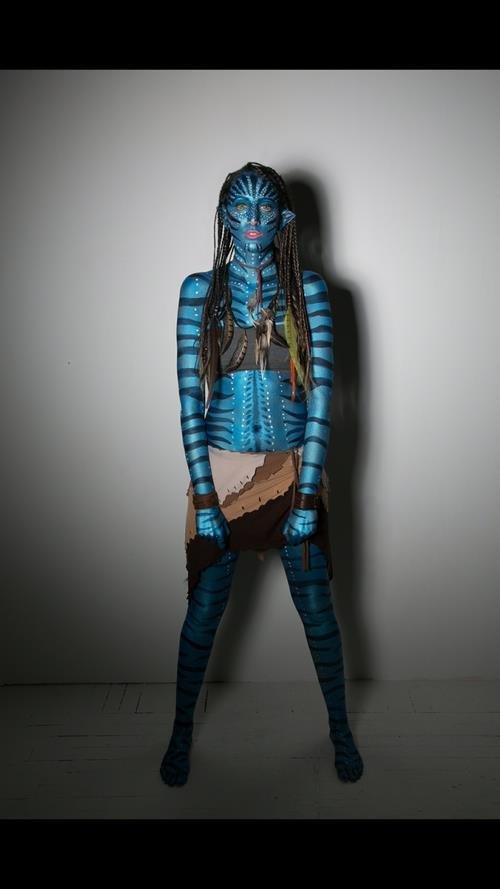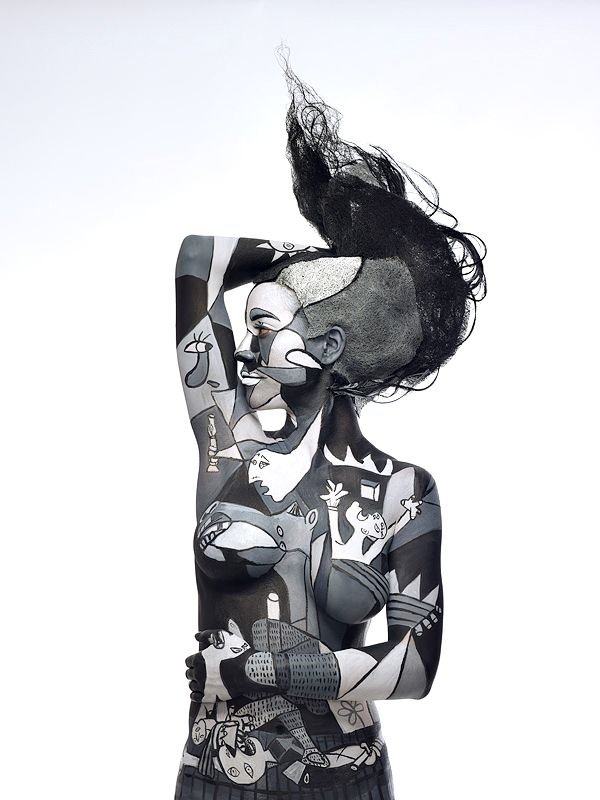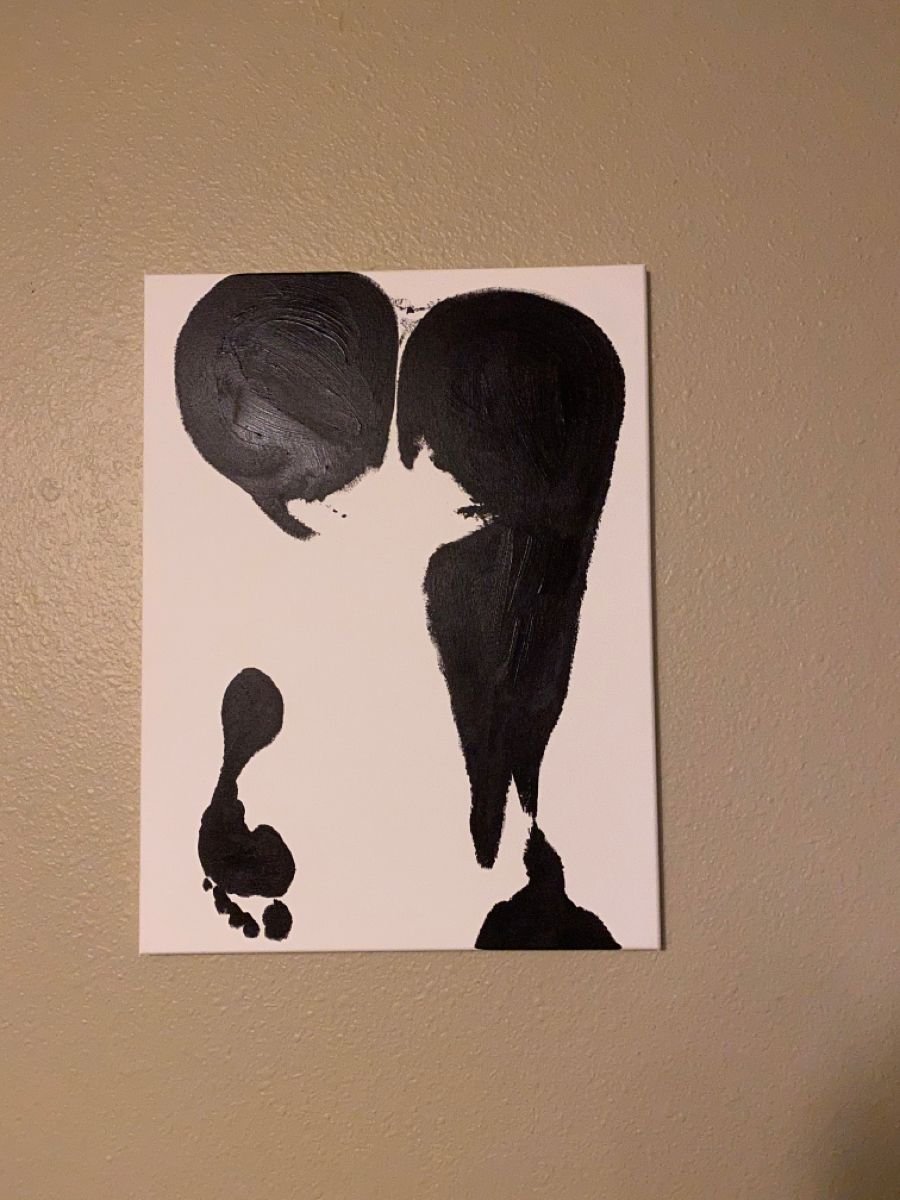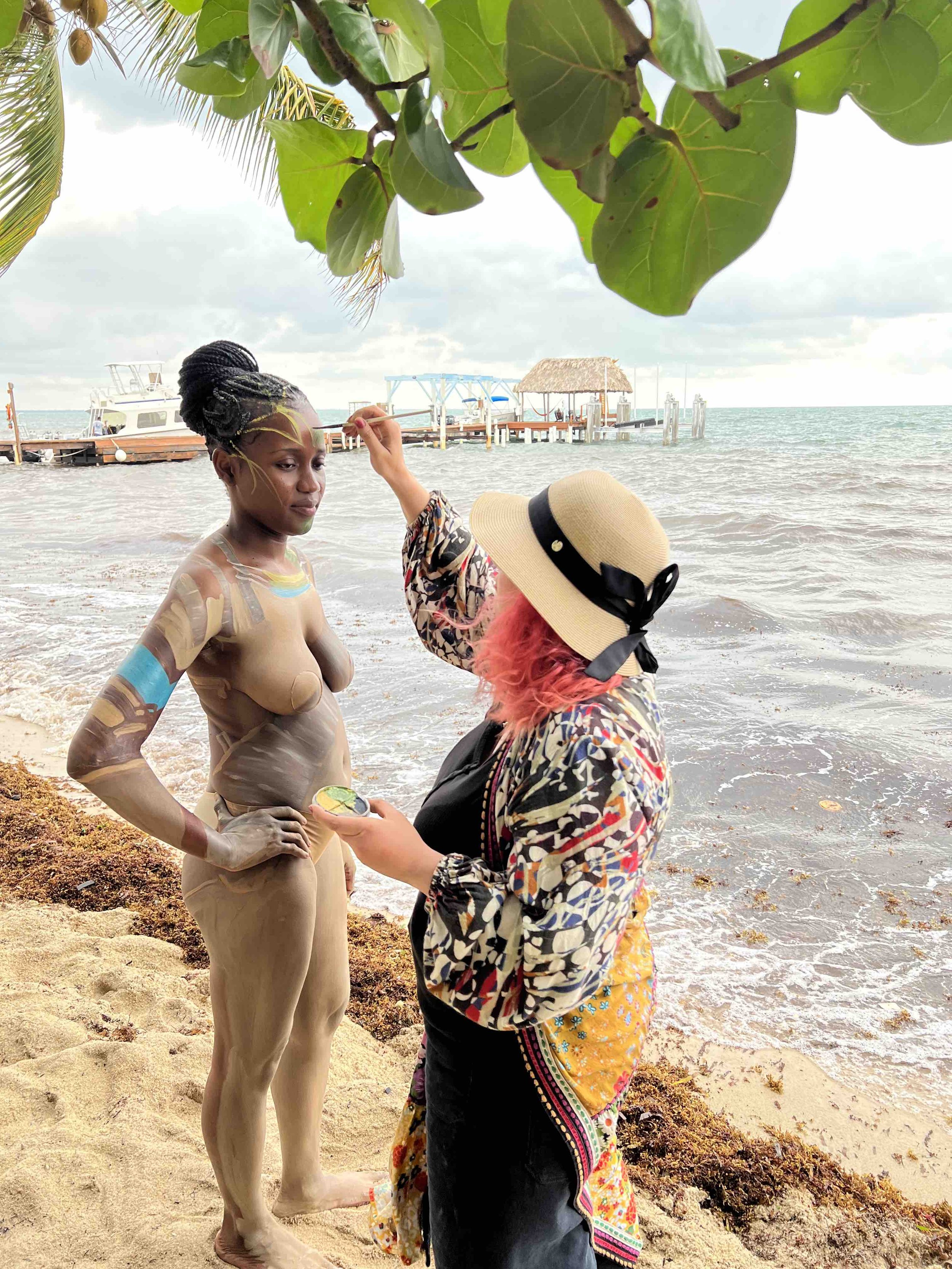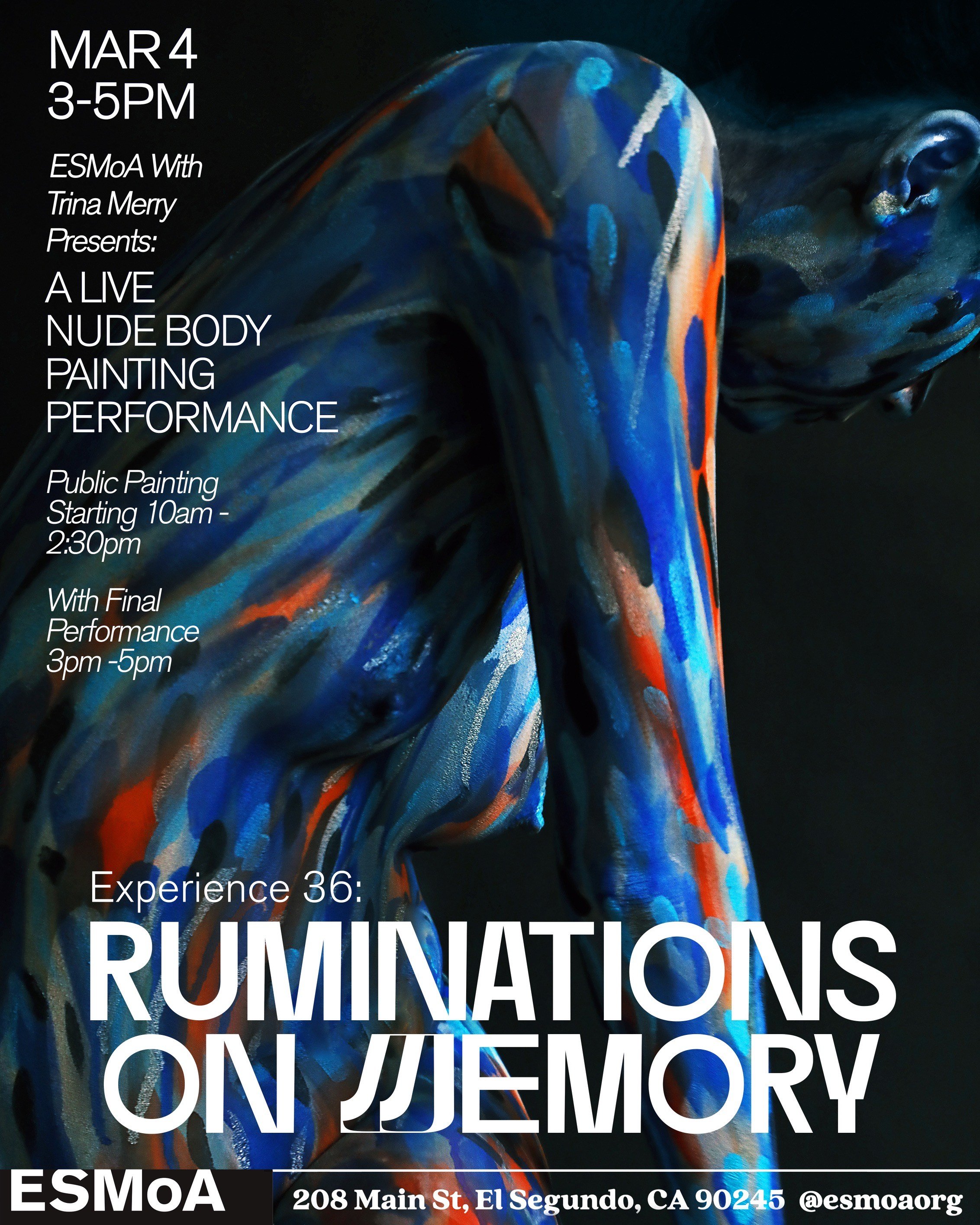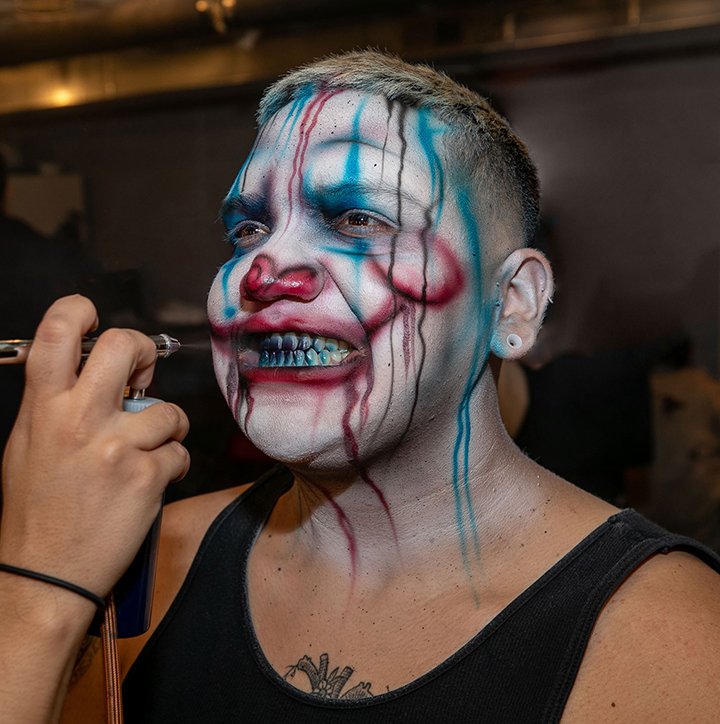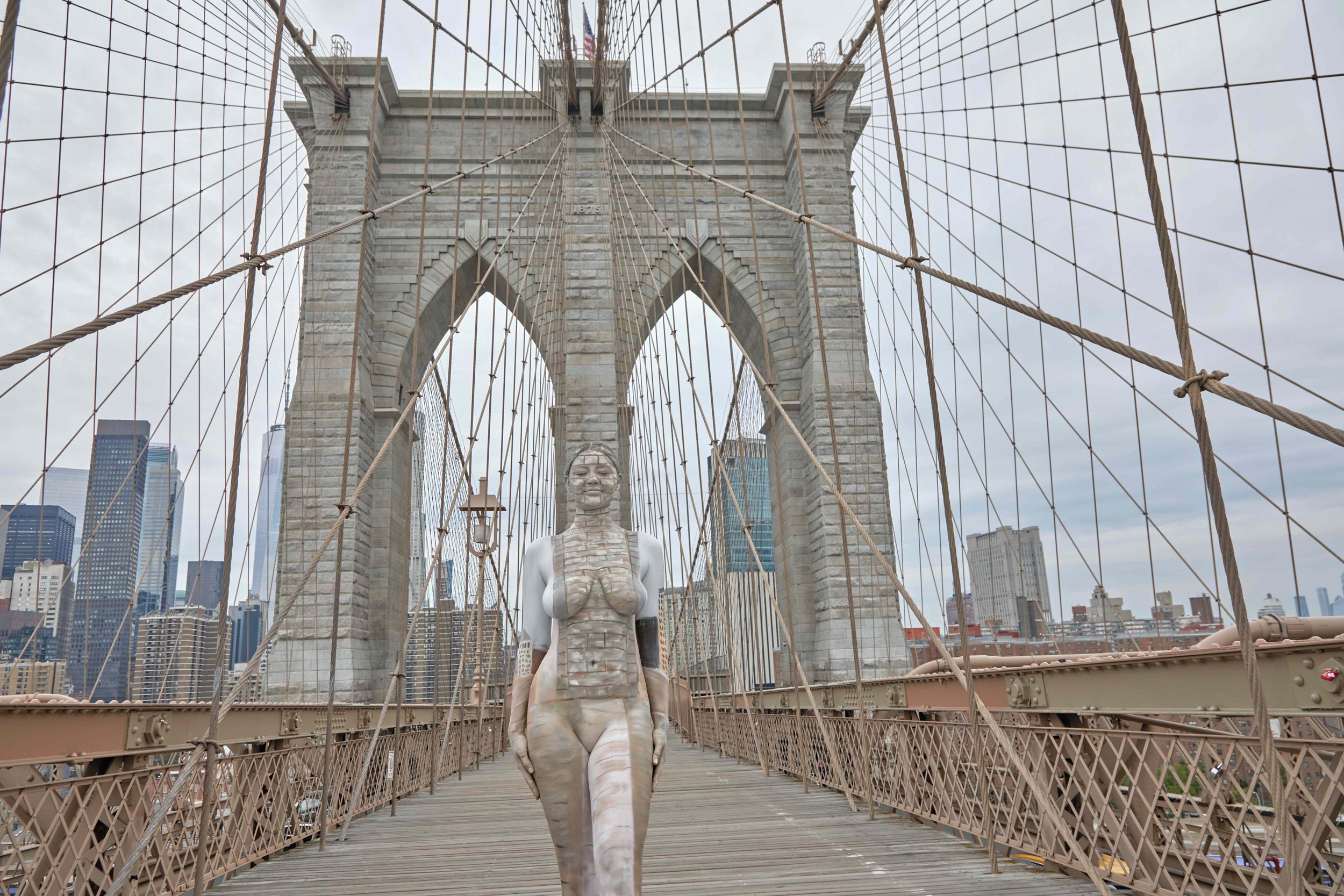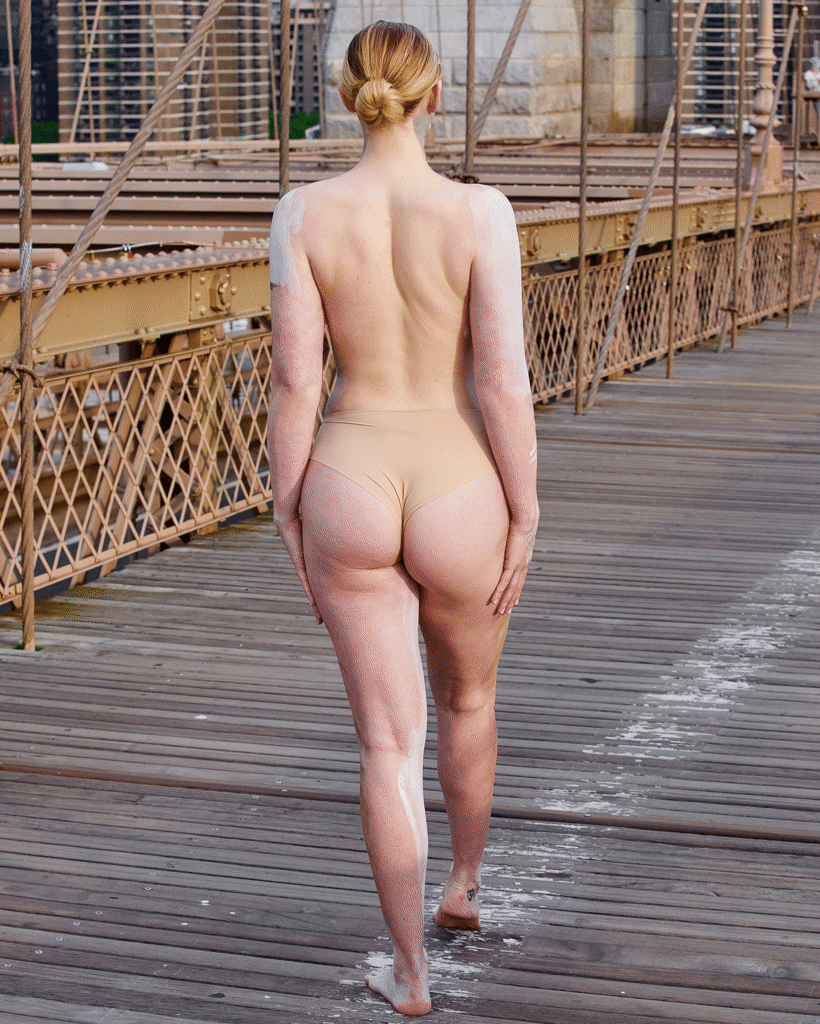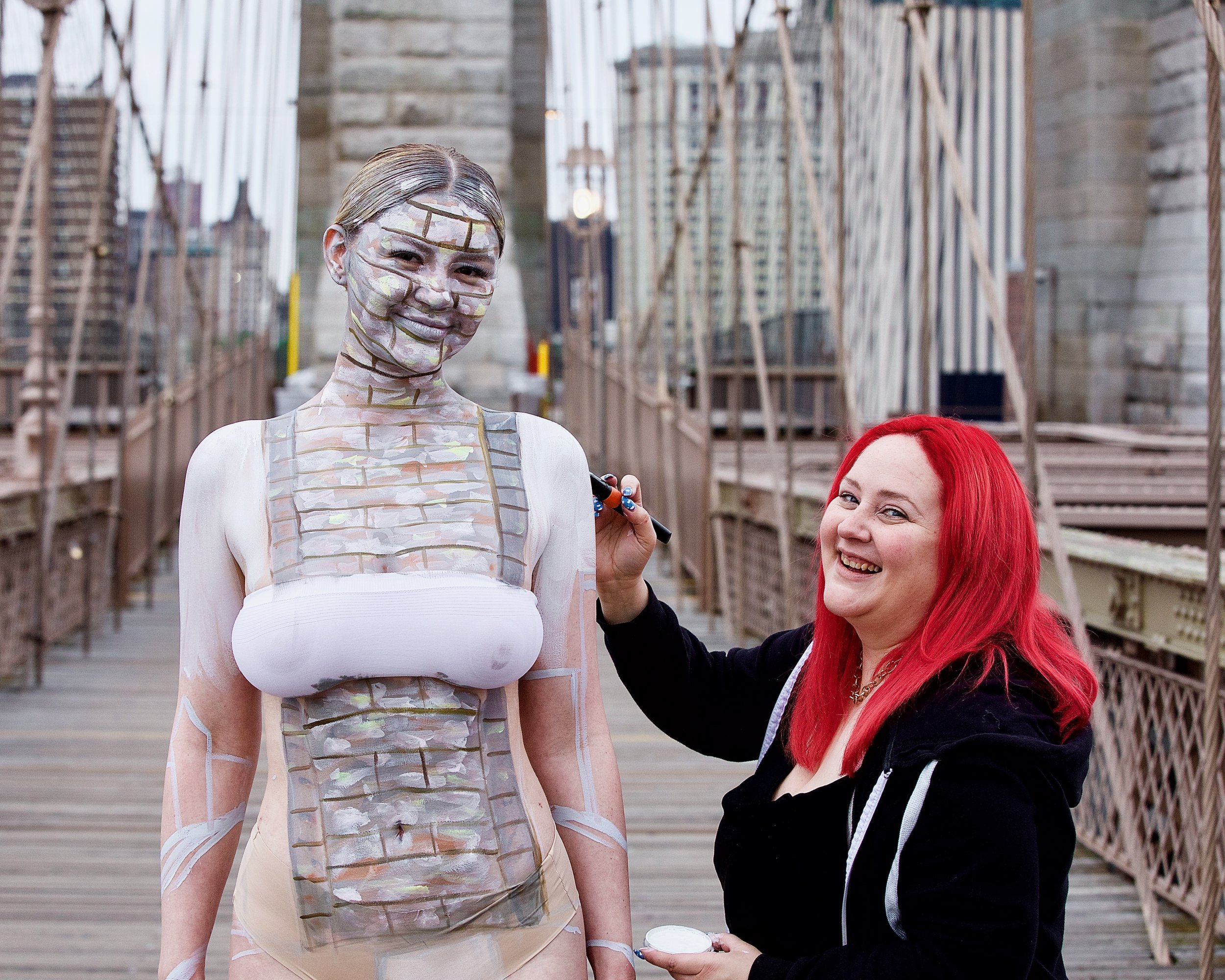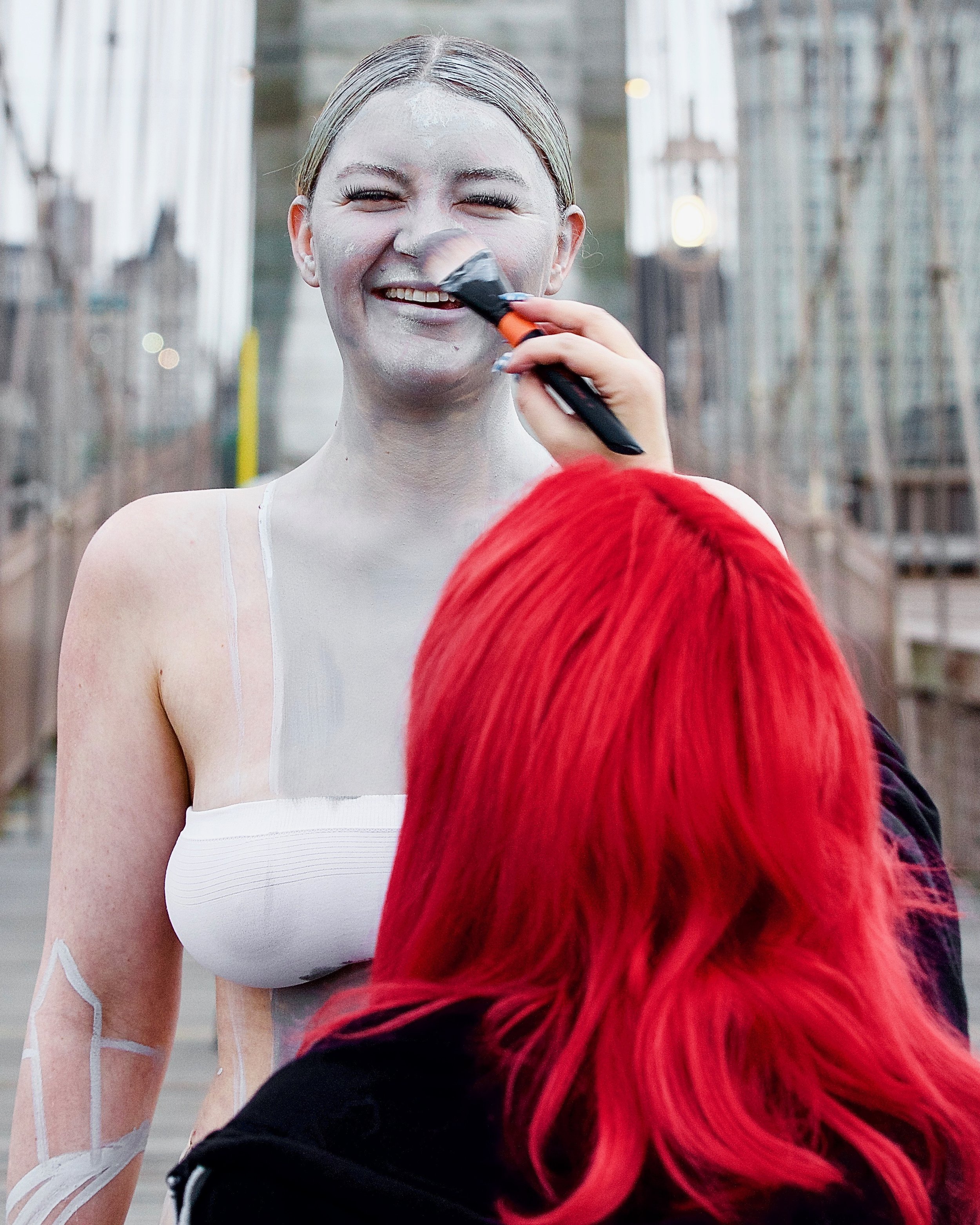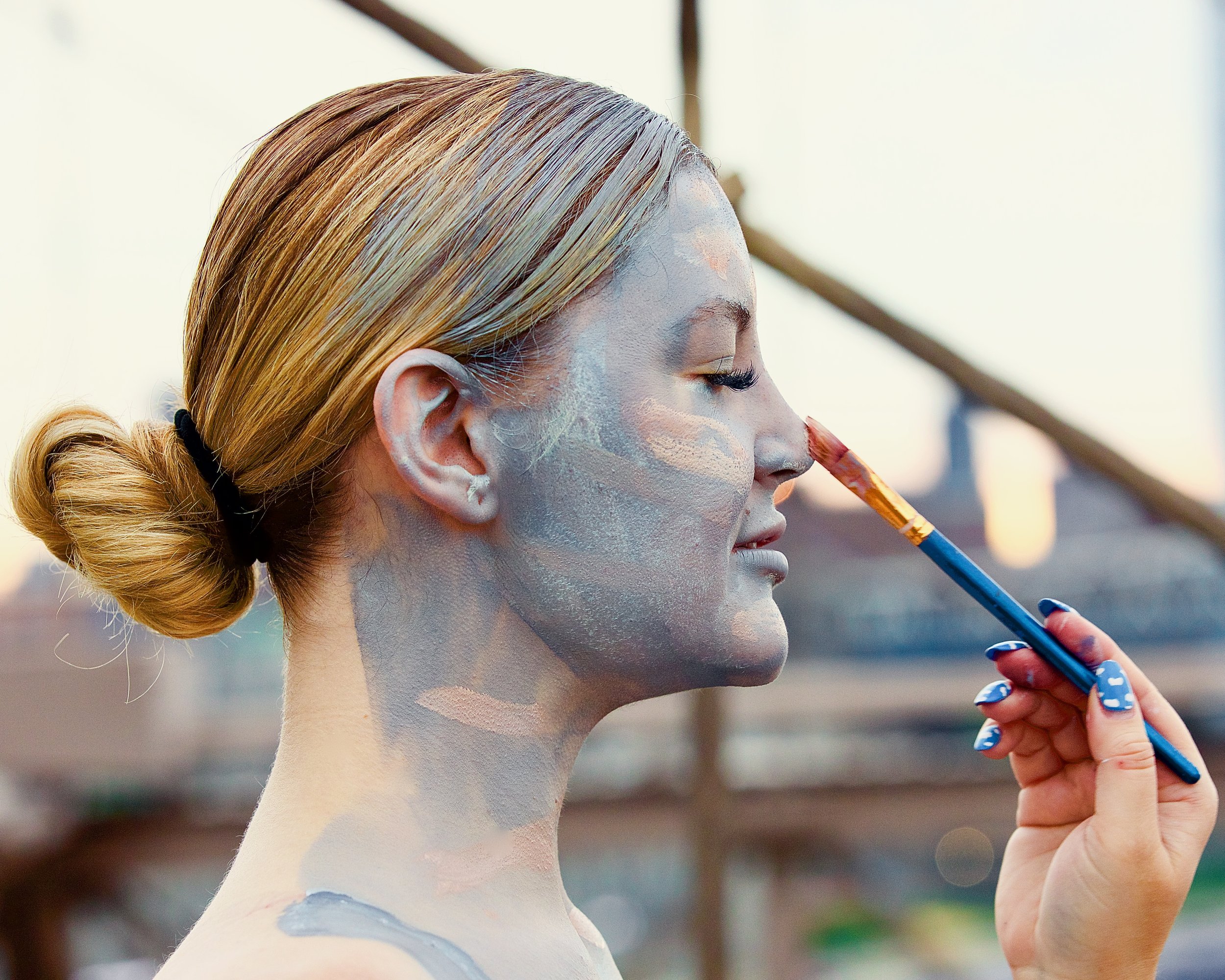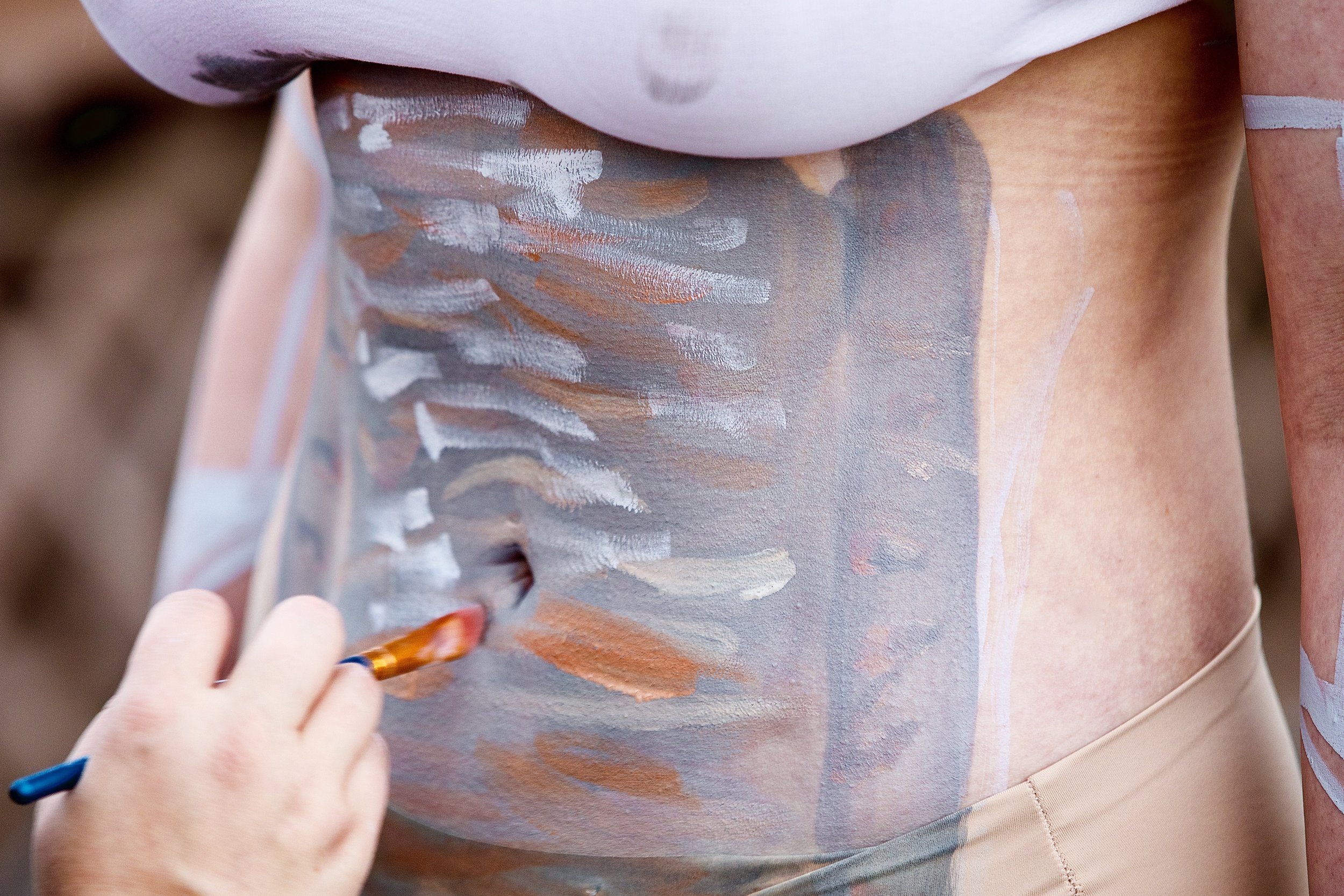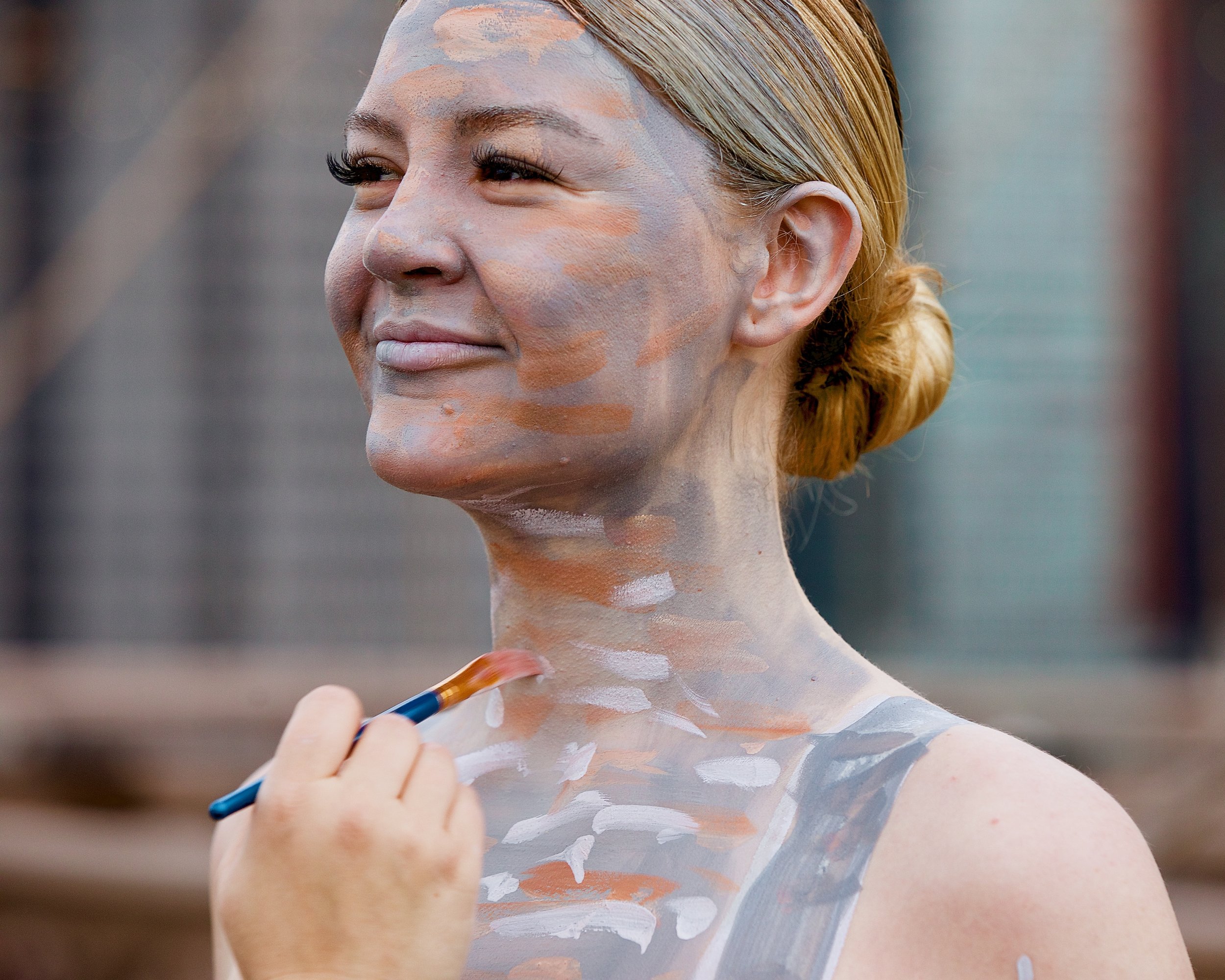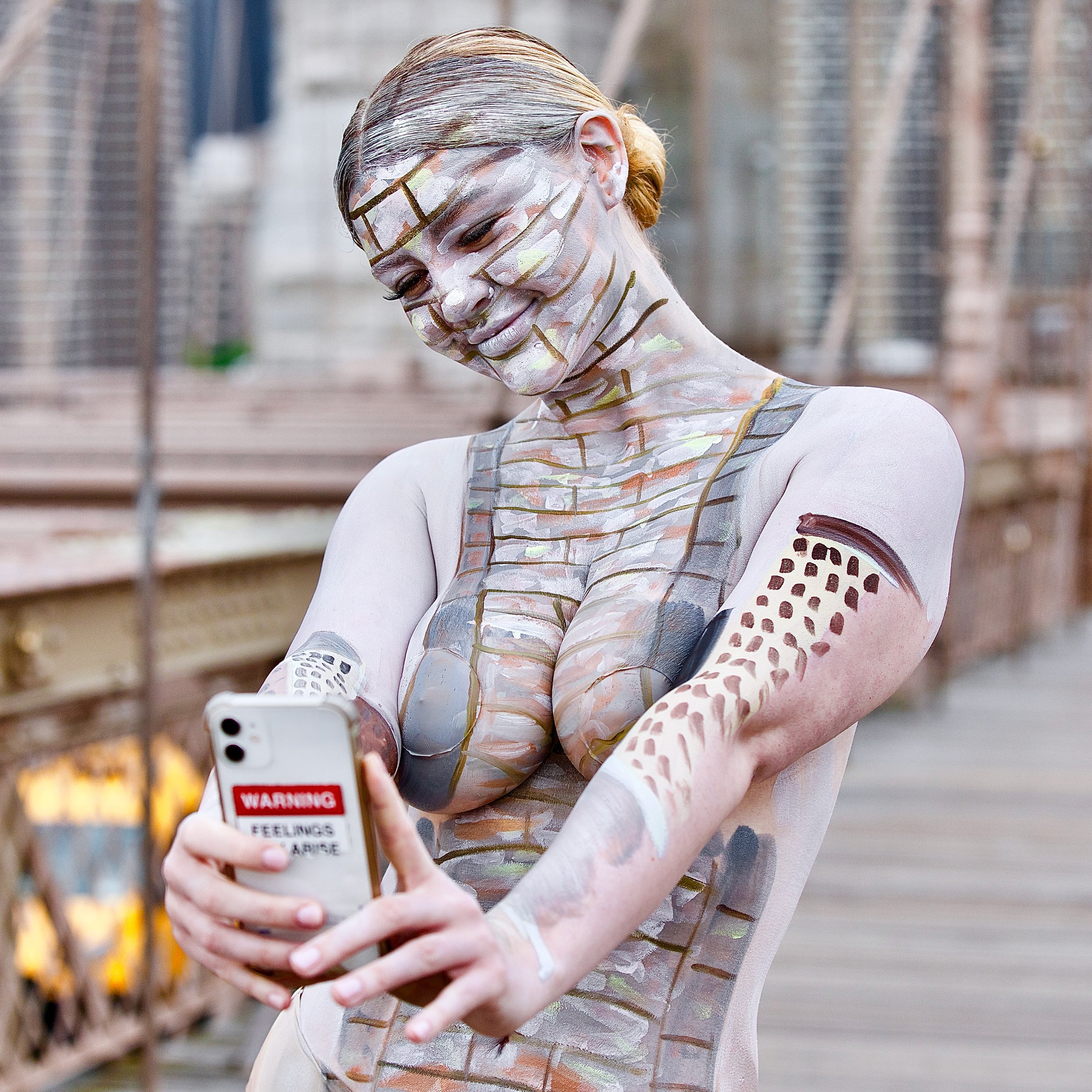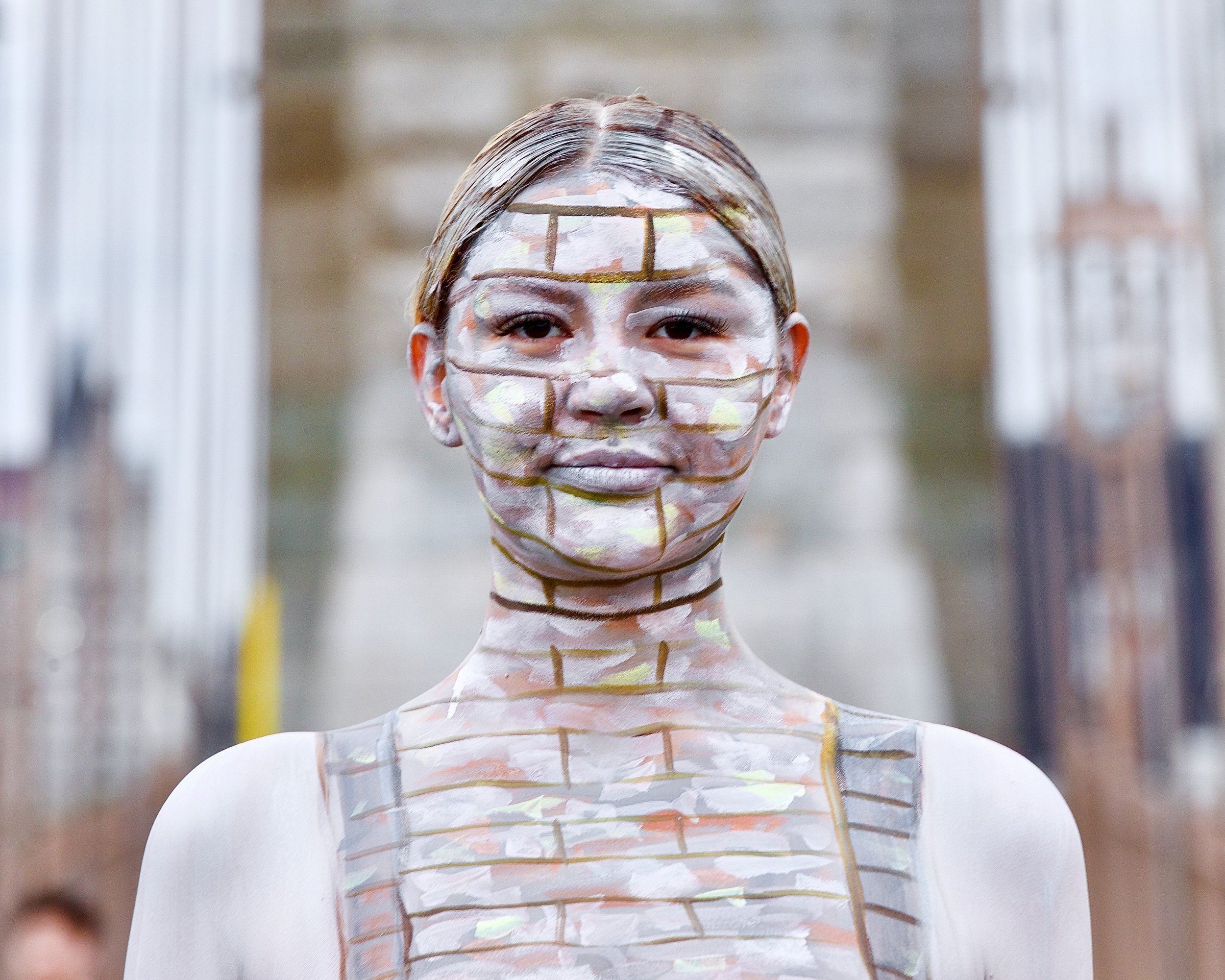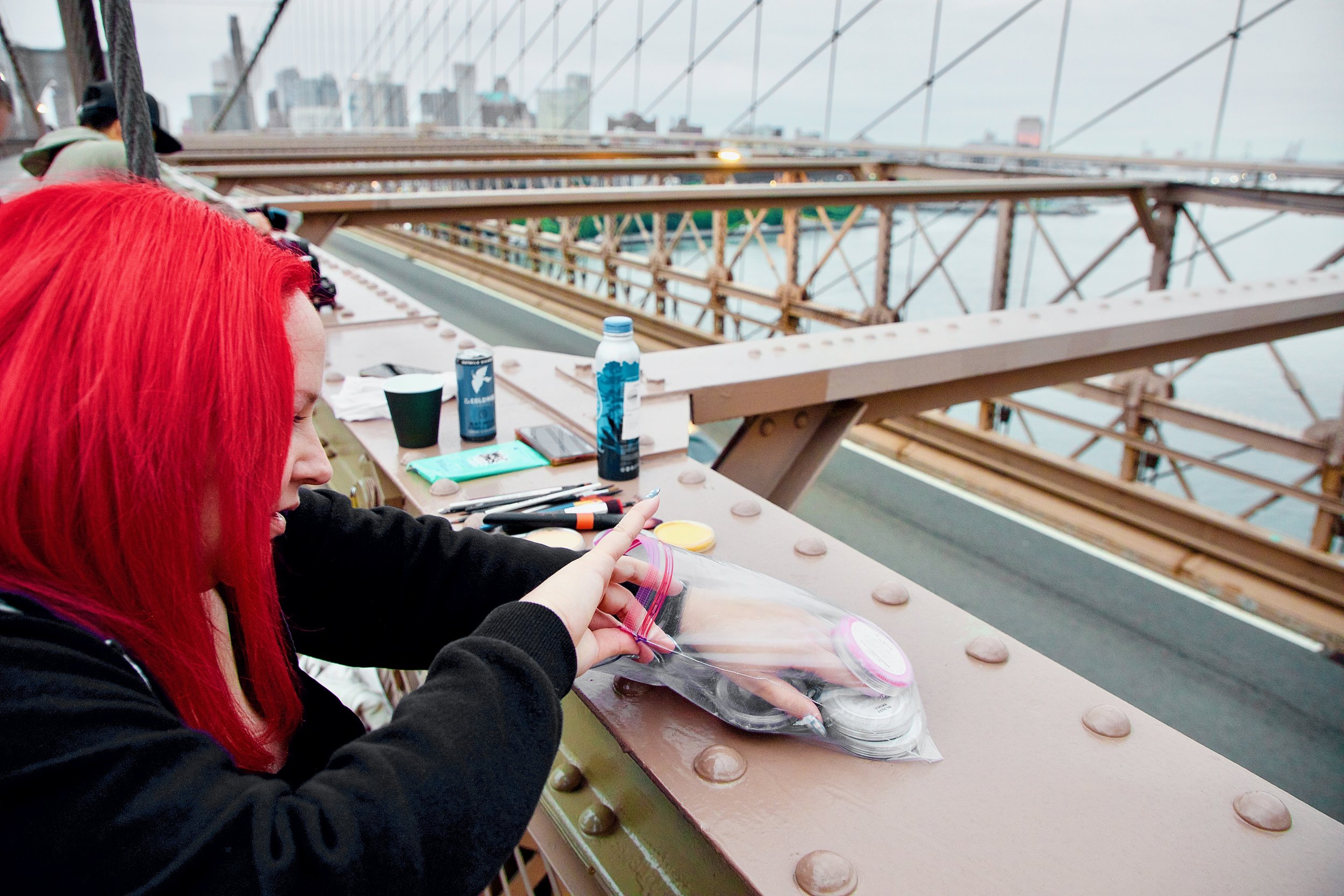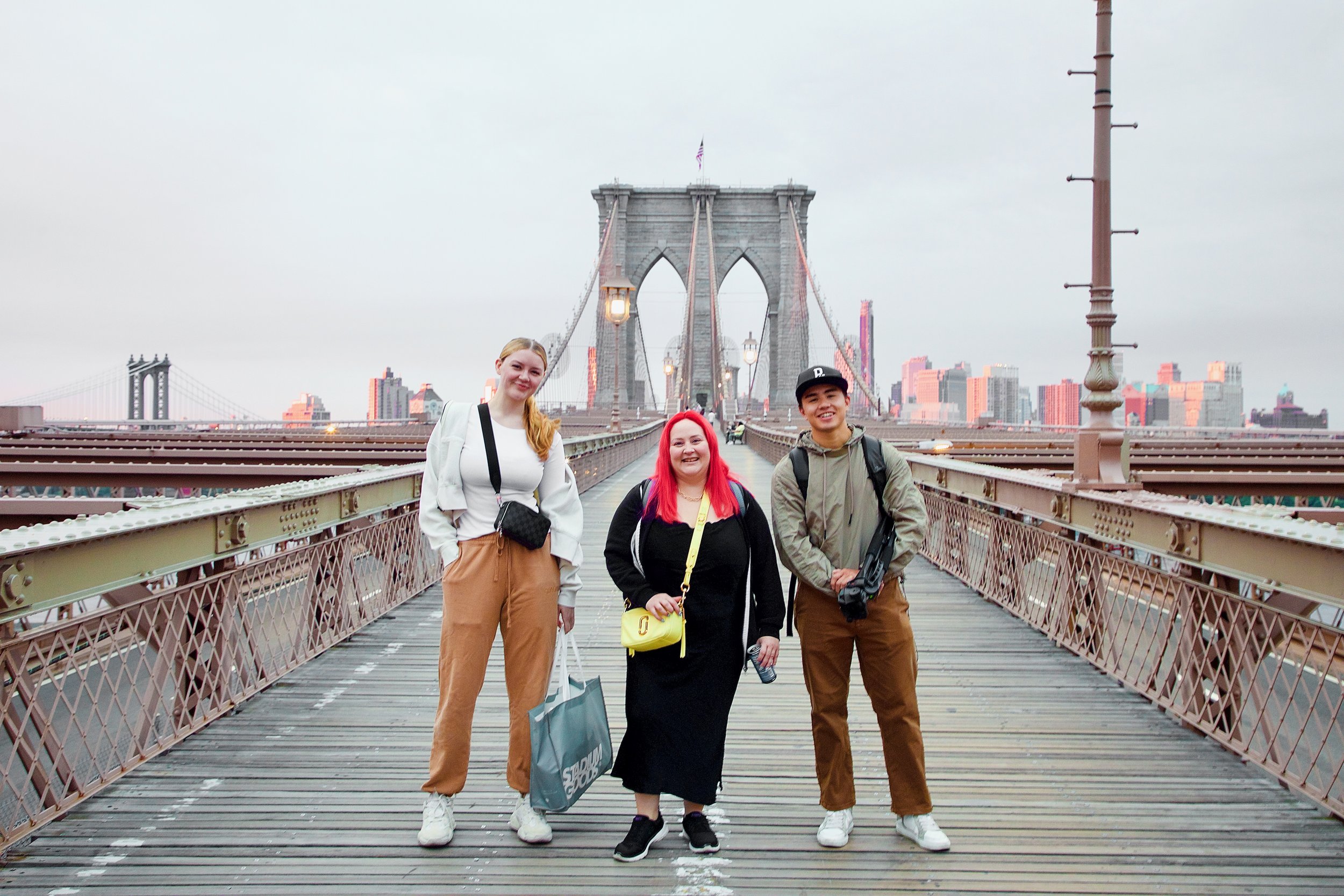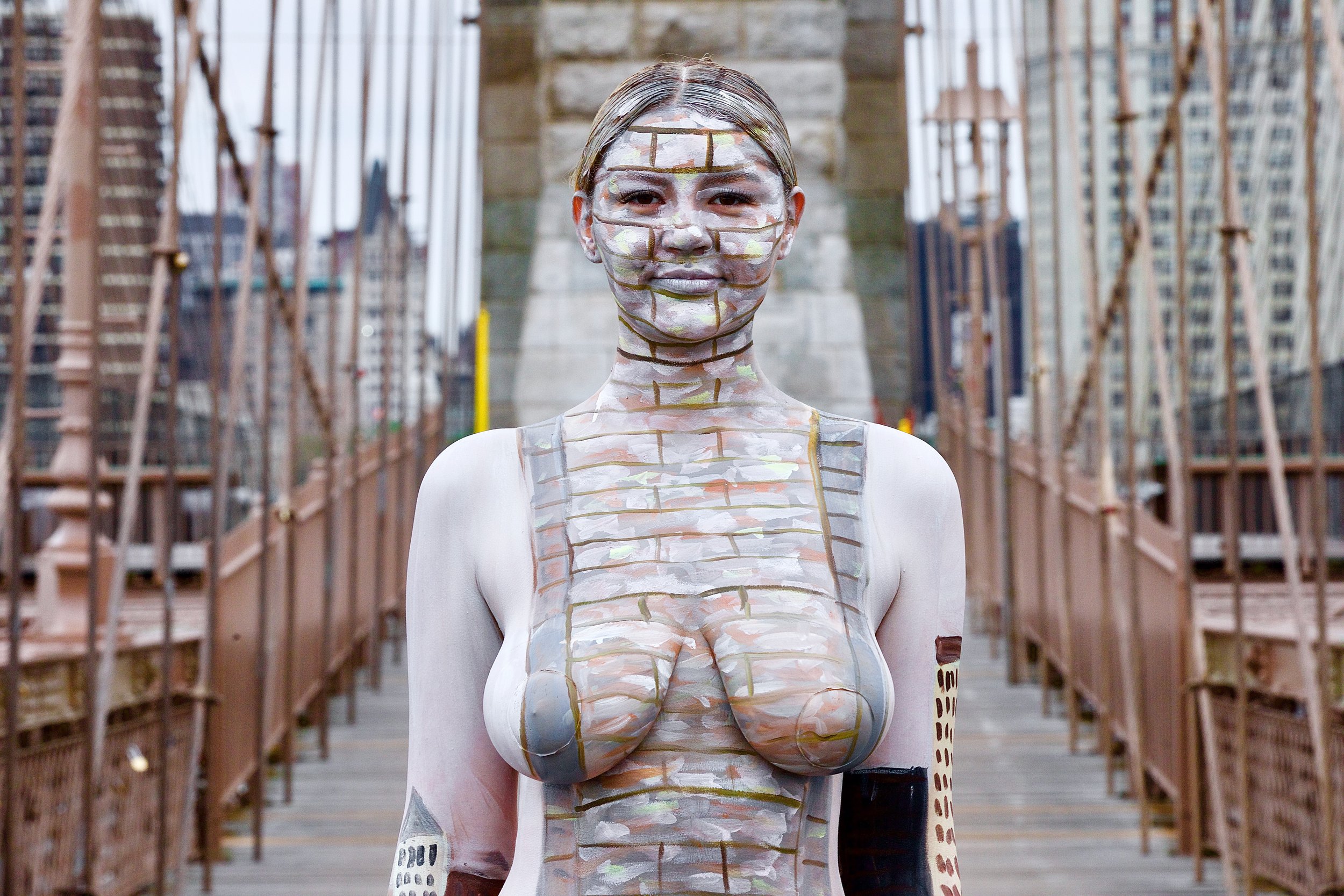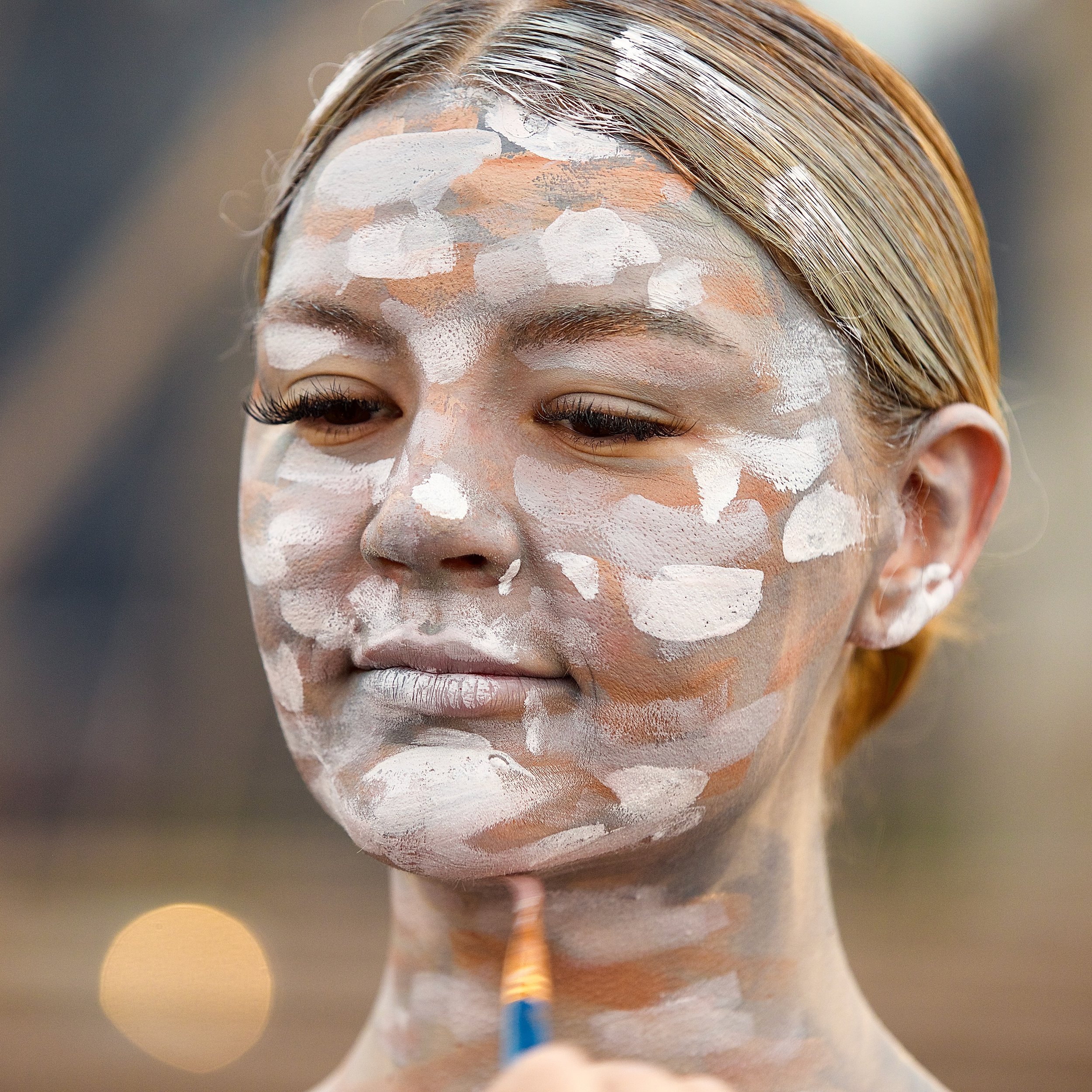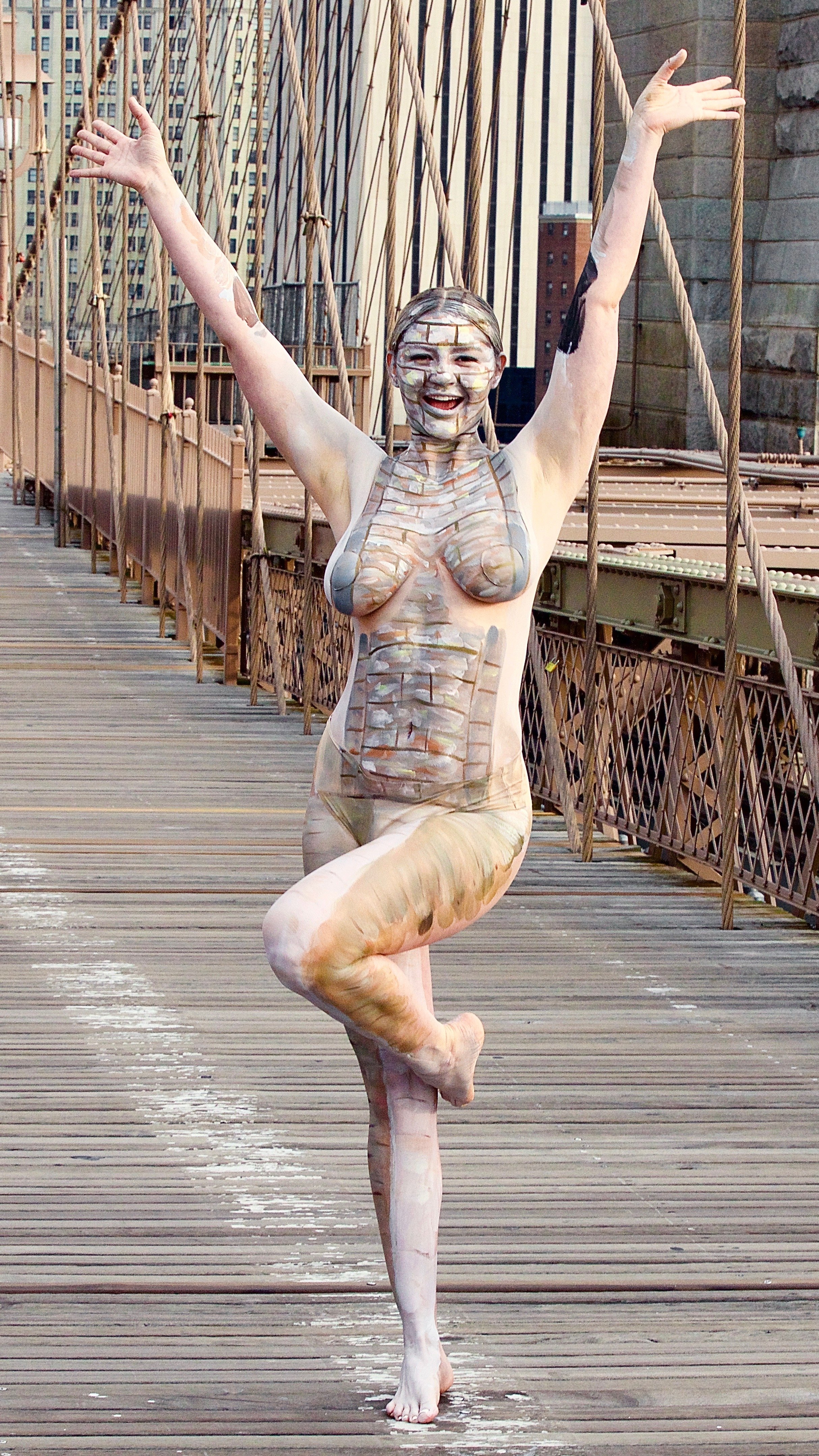Is Body Paint Art? A Comprehensive Art History Guide to the Medium of Bodypaint
Body paint art, an exquisite and captivating form of artistic expression, has fascinated humanity for centuries. This comprehensive guide will take you on a journey through the rich history of bodypainting as an art form, exploring its place in contemporary art, its impact on the art world, and its roots in various artistic movements. From its origins as a cultural practice to its modern manifestations as a fine art medium, we will delve into the intricate world of body paint art.
I. The Historical Evolution of Body Paint Art:
Body paint art has a fascinating and diverse history that spans across ancient civilizations and artistic movements. Let's delve into some specific examples of how body paint art has evolved throughout time:
Indigenous Artists:
Additionally, indigenous cultures around the world, including the Maori of New Zealand, the tribes of Native America, and the Aboriginal peoples of Australia, have a long history of using body paint as a means of cultural expression, storytelling, and identity. These ancient practices demonstrate the enduring significance of body paint as a form of artistic and cultural representation throughout human history.
Ancient Egypt:
In ancient Egyptian civilization, where body paint played a significant role in religious and cultural practices. Egyptians used body paint to adorn themselves for various rituals and ceremonies, often using colors with symbolic meanings. They painted their bodies with vibrant pigments, such as red ochre, black, and white, to represent specific deities or to evoke spiritual connections.
Ancient Greece:
In ancient Greece, body paint art was commonly used in theatrical performances. Actors would adorn their bodies with various pigments and designs to portray different characters on stage. The trompe l'oeil technique, which involved creating realistic three-dimensional illusions on the body, was particularly popular during this period. This technique allowed actors to transform their appearance and captivate audiences with stunning visual effects.
Renaissance:
During the Renaissance, a period marked by artistic innovation and cultural rebirth, the concept of living statue performance art emerged as a captivating form of artistic expression. Inspired by the sculptures of antiquity, artists sought to recreate the illusion of life in their static artworks. Performers would meticulously paint their bodies with colors and textures resembling marble or bronze, immersing themselves in poses that mirrored classical statue and then surprise guest when they moveds. These living statues, through their stillness and attention to detail, captivated audiences and created a sense of awe and wonder. By merging the human form with the artistic ideals of the time, living statue performance art in the Renaissance became a testament to the mastery of both the visual arts and the performing arts, demonstrating the power of the human body as a living canvas.
The dominant artistic practices of the time focused on painting, sculpture, and architecture, with a strong emphasis on naturalistic representation and religious themes. The Renaissance artists sought to revive the classical traditions of ancient Greece and Rome, exploring human anatomy, perspective, and realistic portrayal.
While body paint art was not a prevalent medium during the Renaissance, there were instances of artists using body paint or similar techniques in specific contexts. For example, during festivals, pageants, or theatrical performances, artists and actors might have used temporary body paint or cosmetics to enhance their costumes or portray certain characters.
Additionally, artists like Michelangelo and Leonardo da Vinci conducted meticulous anatomical studies of the human body, often using drawings and sketches to document their observations. These studies, while not specifically focused on body paint, contributed to a deeper understanding of the human form and informed the artistic representations of the period.
It's important to note that the artistic practices and techniques of the Renaissance were diverse and varied across different regions and artists. While body paint was not a prominent medium, the period saw significant advancements in painting, sculpture, and other artistic disciplines that laid the foundation for future artistic developments.
II. Modern Art Movements as Pre-Cursors to Body Paint Art
While body paint art may not be the dominant or widely known aspect of these movements, there are instances where artists from Impressionism, Post-Impressionism, Cubism, Surrealism, Dadaism, and Abstract Expressionism explored or incorporated body paint in their works. Here are a few examples:
Impressionism:
Impressionist artists focused on capturing the fleeting effects of light and atmosphere. While body paint art was not a primary focus, some artists such as Edgar Degas and Pierre-Auguste Renoir explored the theme of the human body in their works, including scenes of dancers and bathers. While they may not have directly used body paint, their depictions of the human form in various states and activities can be seen as a precursor to the exploration of the body as a canvas. The Impressionists primarily worked with painting on canvas, en plein air, and exploring brushwork techniques. The Impressionists, such as Claude Monet and Pierre-Auguste Renoir, aimed to depict the natural world and everyday life with quick brushstrokes and vibrant colors. This led to many plein air bodypaint sub-movements such as camouflage bodypaint artists.
Post-Impressionism:
Post-Impressionist artists expanded upon the innovations of Impressionism, emphasizing personal expression and exploring new techniques. While not specifically using body paint, the interest in color and form in artists like Paul Gauguin and Vincent van Gogh led them to experiment with unconventional color palettes and expressive brushwork. Their bold and vibrant depictions of figures and landscapes could be seen as a precursor to the use of the body as a painted surface.
The Post-Impressionists van Gogh and Paul Cézanne, continued to experiment with color and form, but in more personal and expressive ways. While body paint art was not directly associated with Impressionism and Post-Impressionism, the exploration of light, color, and subjective experience in these movements laid the groundwork for later artists to experiment with different mediums, including body paint, as a means of artistic expression.
Cubism:
Cubist artists, such as Pablo Picasso and Georges Braque, revolutionized the way art was perceived by deconstructing forms and presenting multiple viewpoints simultaneously. While body paint art was not a central aspect of Cubism, Picasso's exploration of different materials and techniques in his works, including collage and assemblage, opened up possibilities for artists to consider the use of unconventional materials and techniques, including body paint.
Picasso, explored the representation of the human figure in their works. Picasso's groundbreaking painting "Les Demoiselles d'Avignon" is known for its fragmented and abstracted depiction of the female form. While body paint was not explicitly used in these artworks, the deconstruction and abstraction of the figure in cubist art can be seen as a departure from traditional representations of the body, reflecting the movement's exploration of form and space. The cubist approach to depicting the human figure laid the foundation for later movements that incorporated the body as a central theme in their artistic practice.
Abstract Expressionism:
Abstract Expressionist artists, such as Jackson Pollock and Willem de Kooning, focused on expressing inner emotions and ideas through abstract forms and gestural brushwork. While body paint art was not a common medium within the abstract expressionism movement, which primarily focused on abstract and non-representational painting, there were instances where artists experimented with the human body as a means of artistic expression.
One notable example is the artist Jackson Pollock, known for his groundbreaking technique of dripping and pouring paint onto canvas. Although Pollock himself did not directly engage in body paint art, his expressive and gestural approach to painting, characterized by the physicality of his movements, can be seen as a precursor to the performative aspects of body art. His emphasis on the artist's physical presence and the direct engagement with the materials resonated with later artists who explored the connection between the body and artistic expression. While not strictly body paint art in the traditional sense, abstract expressionism created a fertile ground for the exploration of the artist's physicality and its impact on the creative process.
III. Body Paint in Modern Art
Surrealism:
Surrealist artists sought to unleash the power of the unconscious mind and explore dreamlike imagery. While not directly using body paint, artists like Salvador Dalí and René Magritte incorporated elements of the human body in their surreal compositions. They often depicted distorted or fragmented bodies, merging human and non-human elements, creating a sense of the uncanny and challenging the traditional perceptions of the body.
There were instances where Surrealist artists incorporated elements of body paint or explored the concept of body art in their works. Here are a few examples:
Salvador Dalí: Dalí, known for his dreamlike and fantastical imagery, occasionally incorporated body paint in his performances and collaborations. In the 1930s, he collaborated with photographer Philippe Halsman on a series of photographs titled "Dalí Atomicus," which featured Dalí himself suspended in mid-air while objects and cats were captured in motion around him. The subjects, including Dalí, were covered in water, giving the illusion of bodies in a state of flux. While not traditional body paint, this collaboration explored the surreal and transformative possibilities of the human form.
Meret Oppenheim: Oppenheim, a key female artist associated with Surrealism, explored the notion of body and transformation in her works. In her sculpture "Object" (also known as "Luncheon in Fur"), she covered a teacup, saucer, and spoon with fur, creating an uncanny juxtaposition between the everyday object and the tactile sensation of fur against the skin. This subversion of functionality and the introduction of unconventional materials blur the boundaries between the body and the object, a characteristic element of Surrealist thought.
It is worth noting that Surrealism as a movement focused more on the exploration of the subconscious mind, dream symbolism, and irrationality rather than body paint specifically. However, the Surrealist artists' fascination with the human psyche and their willingness to challenge conventional norms often led them to incorporate elements of the body and the performative aspects of art in their works.
Dadaism:
Dadaist artists were known for their radical and anti-establishment approach to art. While body paint art was not a dominant aspect of Dadaism, artists like Francis Picabia and Hannah Höch explored the juxtaposition of found objects and images, challenging the conventional boundaries of art. While not directly using body paint, their collages and assemblages blurred the lines between different materials and artistic mediums, opening up possibilities for the use of body paint as a subversive and unconventional medium.
There were instances where Dada artists explored body paint or incorporated elements related to body art in their performances and artworks. Here are a few examples:
Marcel Duchamp, one of the key figures of the Dada movement, incorporated body paint art into his performances and collaborations, challenging traditional artistic norms and conventions. In his famous piece "Rrose Sélavy," Duchamp used body paint to transform himself into a feminine alter ego, blurring the boundaries of gender and identity. Through this act of self-transformation, he questioned the fixed nature of personal identity and pushed the boundaries of artistic expression. While Duchamp did not directly engage in body paint art beyond this specific performance, his conceptual and subversive approach to art, exemplified in his readymades like "Fountain," influenced later movements, including body art. His provocative works disrupted established ideas of art and opened up possibilities for artists to explore unconventional mediums and challenge societal norms.
Man Ray: As a prominent Dada artist and a leading figure in Surrealism, Man Ray experimented with body paint and incorporated it into his photography and performances. In his photograph "Le Violon d'Ingres," he painted f-holes on the back of a nude model, evoking the imagery of a musical instrument. This playful and surreal use of body paint challenges the traditional notion of the human body as a passive subject.
It's important to note that while Dada artists did not extensively utilize body paint, the Dada movement as a whole embraced a spirit of rebellion, absurdity, and unconventional approaches to art. They sought to challenge established artistic norms and create thought-provoking and often provocative works that defied traditional conventions.
Gutai:
In the post-World War II era, the Gutai movement in Japan embraced body paint art as a form of radical expression. Founded by Jiro Yoshihara, the Gutai movement sought to break free from traditional artistic conventions and explore new possibilities in art-making. One aspect of Gutai's philosophy was the belief in the direct engagement of the body with artistic materials.
Artists like Kazuo Shiraga took this philosophy to heart and created dynamic and energetic paintings through body paint art. Shiraga used his entire body as a tool to apply paint onto large canvases, utilizing vigorous movements and gestures. By physically engaging with the paint, Shiraga sought to capture the immediacy and rawness of artistic expression, creating abstract works that were both visually powerful and emotionally charged.
The Gutai movement as a whole embraced experimentation and pushed the boundaries of what art could be. They explored the relationship between the body and artistic materials, often incorporating performance and live painting events. By integrating body paint art into their practice, Gutai artists challenged the traditional notions of painting and expanded the possibilities of artistic creation.
In the Gutai movement, several artists explored the use of body paint or utilized the body as a brush or canvas in their artistic practice. Here are a few notable Gutai artists who incorporated these elements:
Kazuo Shiraga: Kazuo Shiraga was a prominent Japanese artist associated with the Gutai movement. Known for his dynamic and physically intense approach to painting, Shiraga left a lasting impact on the art world. He developed a unique technique that involved using his entire body as a brush, particularly his feet, to apply paint directly onto large canvases. Through his vigorous movements and gestures, he created abstract and powerful works that showcased the raw energy and immediacy of artistic expression.
Shiraga's process of painting was highly physical and performative. He would suspend himself above the canvas, often using ropes or hanging apparatus, and use his feet to apply paint with swift and forceful strokes. By bypassing traditional painting tools and embracing the direct engagement of his body, Shiraga sought to capture the essence of creation in its most instinctive and unfiltered form. His works were characterized by bold, gestural brushwork and vibrant colors, reflecting the artist's intense physicality and his commitment to breaking free from established artistic conventions.
Kazuo Shiraga's contributions to the Gutai movement and the art world at large were significant. His innovative use of the body as a brush and his rejection of traditional techniques challenged the notion of painting as a purely cerebral pursuit. Through his dynamic and expressive works, he pushed the boundaries of artistic creation and emphasized the importance of the artist's physical presence and direct engagement with the materials. Shiraga's legacy continues to inspire contemporary artists and serves as a testament to the power of artistic expression and experimentation.
Atsuko Tanaka: Tanaka's work often involved performance and interactive installations. In her performance piece titled "Electric Dress," she covered herself in electric wires and bulbs, transforming her body into a living sculpture. This exploration of the body as an artistic medium reflected the Gutai movement's emphasis on the direct engagement of the body.
Shozo Shimamoto: Shimamoto was known for his experimental and action-oriented approach to art. He used his body as a brush, vigorously throwing or splattering paint onto the canvas. Through these physical gestures, he sought to capture the immediacy of the artistic process.
Sadamasa Motonaga: Motonaga incorporated body paint into his performances, where he would paint directly onto his own body or the bodies of others. By blurring the boundaries between the artist, the artwork, and the audience, he challenged traditional notions of art and invited viewers to participate in the creative process.
These Gutai artists, among others, embraced the use of body paint and explored the body's potential as a brush, canvas, or medium of expression. Their experimental and unconventional approaches challenged traditional artistic norms and expanded the possibilities of artistic creation within the Gutai movement.
Nouveau réalisme (New Realism)
While the Nouveau réalisme movement primarily focused on incorporating everyday objects and materials into artistic practice, there were some artists associated with the movement who explored body-related themes and engaged with the human form.
Yves Klein, a prominent artist associated with the Nouveau réalisme movement, did use body paint in his artistic practice. One of his most notable works involving body paint is the performance piece titled "Anthropometry of the Blue Period" (1960). In this performance, Klein directed female models to cover their bodies in his signature blue pigment, known as International Klein Blue (IKB), and then press themselves against large canvases, leaving imprints of their bodies behind. Klein considered these body imprints to be "living brushes" or "human paintbrushes" and viewed the act of using the human body as a medium as a way to transcend traditional notions of art-making. By using the body as both the instrument and the canvas, Klein sought to create a direct connection between the artist's physical presence and the artwork. The resulting imprints became abstract representations of the human form, evoking a sense of presence and embodiment within the artwork. Klein's use of body paint and the performative aspect of his work challenged established artistic conventions and explored new possibilities for artistic expression. Through his innovative approach, he aimed to transcend the limitations of traditional painting and engage with the human body as an integral part of the creative process.
Niki de Saint Phalle: Known for her large-scale sculptures and immersive environments, Niki de Saint Phalle often incorporated the human form into her works. Her series of "Nanas" sculptures featured voluptuous female figures, painted in vibrant colors and patterns, which celebrated the female body and challenged societal norms. de Saint Phalle's work often involved the use of the body as a canvas and explored issues of femininity, sexuality, and the human form. In her "Shooting Paintings" series, she would place containers of paint on large canvases and then shoot at them, causing the paint to explode and create dynamic patterns. Additionally, Saint Phalle used body paint on her models and herself in various performances, blurring the boundaries between art and life. Her exploration of the body and performative elements align with the movement's spirit of engaging with reality and pushing the boundaries of traditional art practices. Her use of body paint as a form of artistic expression adds a unique dimension to her body of work and highlights the diverse approaches artists took within the broader context of Nouveau réalisme.
Jean Tinguely: While not directly using body paint, Jean Tinguely's kinetic sculptures and interactive installations often invited viewers to physically engage with the artwork. His machines and contraptions encouraged movement and participation, blurring the boundaries between the human body and the artwork.
César Baldaccini: César, as he was commonly known, was a sculptor associated with Nouveau réalisme. While his works primarily focused on the transformation of discarded materials and industrial objects, he also explored the human figure in some of his sculptures. For instance, his "Compression" series featured compressed car bodies that alluded to the human form.
Although these artists may not have directly used body paint, their engagement with the human body, either through representation or interaction, resonates with the themes of Nouveau réalisme.
Bodypaint in Contemporary Art:
While body paint may not have been a dominant medium in these contemporary art movements, there are instances where artists have incorporated it into their works. Here are some examples:
Pop Art:
Pop Art, known for its use of popular culture imagery, consumerism, and mass media, did not prominently feature body paint as a medium. However, the interest in exploring popular culture and the human body led to artists like Andy Warhol and Roy Lichtenstein depicting stylized and iconic figures in their works. While body paint itself may not have been used, the representation of the body in a graphic and stylized manner with colorful skin can be seen as a connection to body paint art.
One notable example is the collaboration between Andy Warhol and the fashion designer and artist Marisol. Marisol created life-sized wooden sculptures of Warhol's famous silkscreened paintings, which included depictions of famous personalities such as Marilyn Monroe and Elvis Presley. Marisol then invited individuals to wear body paint that matched the colors and patterns of the sculptures, effectively becoming living embodiments of Warhol's iconic artworks. This merging of sculpture, body paint, and performance brought a playful and interactive dimension to Pop Art, blurring the boundaries between art and life.
Another artist associated with Pop Art who occasionally incorporated body paint into his work is Allen Jones. Jones is known for his provocative sculptures and paintings that explore themes of sexuality, gender, and objectification. In his series of works titled "Table Sculptures," he created life-sized female figures in fetishistic clothing, some of which were painted with bold and vibrant colors. While these works were primarily sculpture-based, the incorporation of body paint added an additional layer of visual impact and emphasized the objectification of the female body that Jones often addressed in his art.
While the use of body paint in Pop Art was not widespread or a defining characteristic of the movement, these examples demonstrate how some Pop artists explored body paint as a means to engage with issues of identity, performance, and the blurring of art and reality.
Minimalism:
Minimalist artists sought to reduce art to its essential elements, often using simple forms, industrial materials, and clean lines. Body paint was not a central medium in Minimalism. However, artists like Yves Klein, a precursor to Minimalism, explored the body as a medium through performances such as "Anthropometry," where nude models covered in paint imprinted their bodies onto canvases. This exploration of the body as a tool for artistic creation can be seen as a precursor to the concept of body paint art.
The movement primarily emphasized clean lines, geometric forms, and the use of industrial materials. However, there were a few instances where body paint intersected with the principles of Minimalism.
One such example is the artist Yves Klein, who is associated with both Minimalism and the Nouveau Réalisme movement. Klein is renowned for his exploration of monochromatic blue artworks, which he considered to be an embodiment of the infinite. In his famous performance piece titled "Anthropometry," Klein used nude models as human brushes, applying blue paint to their bodies and directing them to create imprints on canvases. By employing the human body as a tool and blurring the boundaries between art and life, Klein challenged traditional notions of artistic creation and incorporated an element of bodily engagement within his minimalist aesthetic.
Another artist who ventured into the realm of Minimalism and body paint is Carolee Schneemann. While Schneemann is primarily associated with feminist art and performance, her work often intersected with Minimalist sensibilities. In her groundbreaking performance piece titled "Meat Joy," Schneemann and other participants covered their bodies with paint, feathers, and raw meat, engaging in a ritualistic and immersive exploration of sensuality, liberation, and primal instincts. This performance, while not strictly adhering to Minimalist principles, emphasized the physicality of the body and its connection to the environment, challenging traditional notions of art and expanding the boundaries of artistic expression.
While body paint was not a central element of Minimalism, these examples illustrate how a few artists within the movement incorporated elements of body paint into their practices, exploring bodily engagement, performance, and the blurring of boundaries between art and life.
Conceptual Art:
Conceptual Art prioritized the idea or concept behind an artwork over its physical form. Several conceptual artists have explored the use of body paint as a medium within their practices. Body paint can be a powerful tool for conceptual artists to convey ideas, challenge conventions, and explore themes related to identity, politics, and the body itself. Here are a few notable conceptual artists who have incorporated body paint into their works:
Marina Abramović: Abramović is renowned for her groundbreaking performance art that often involves intense bodily engagement. In her piece "Rhythm 0," she invited the audience to interact with her body using various objects, including body paint. The act of applying paint to her body and allowing others to manipulate it challenged notions of authorship and control, highlighting the power dynamics between the artist, the artwork, and the viewer.
Ana Mendieta: Mendieta's work often explored themes of body, identity, and connection to nature. In her series "Silueta," she used body paint to create imprints and silhouettes of her body on different surfaces, including landscapes and architectural structures. Through these ephemeral interventions, Mendieta sought to emphasize the transient nature of the body and its connection to the surrounding environment.
Yoko Ono: Ono, a pioneering conceptual artist, has incorporated body paint in several of her works. In her famous performance piece "Cut Piece," she invited the audience to cut away pieces of her clothing, revealing her body. This act of exposing the body through interactive participation challenged social constructs and explored themes of vulnerability and agency.
Adrian Piper: Piper, known for her thought-provoking conceptual works, has explored the use of body paint as a means to confront issues of race, identity, and perception. In her series "The Mythic Being," she transformed herself into a fictional male character using body paint, challenging societal expectations and exploring issues of gender and race in a satirical and confrontational manner.
These artists, among others, demonstrate how body paint can be employed as a conceptual tool within contemporary art. By incorporating body paint into their practices, they push the boundaries of artistic expression and engage with complex themes related to the body, identity, and social dynamics.Performance Art:
Performance art involves live actions performed by artists in front of an audience. Body paint has been used by performance artists to create visual transformations and explore themes of identity, politics, and the human condition. Notable artists like Marina Abramovic, Ana Mendieta, and Veruschka have used body paint in their performances to challenge societal norms and provoke emotional responses.
Installation Art:
Installation art encompasses large-scale, immersive environments created by artists. Artists have incorporated the human body as a painted or decorated element within their installations. The body may serve as an interactive component or become part of the overall visual narrative within the space. some installation artists have incorporated body paint as part of their immersive and experiential artworks. By integrating body paint within their installations, these artists blur the boundaries between the human body and the surrounding environment, creating dynamic and interactive experiences. Here are a few examples:
Carolee Schneemann: Schneemann, known for her pioneering work in performance art and feminist art, often incorporated body paint in her installations and performances. In her iconic work "Interior Scroll," she painted her naked body and used it as a canvas while delivering a provocative monologue. By integrating her body as both a subject and an object within the installation, Schneemann challenged traditional notions of the female body in art.
Ernesto Neto: Neto's installations often invite viewers to physically engage with the artwork and the surrounding space. In some of his works, he incorporates body paint as a sensory element. Visitors may be encouraged to apply paint to their bodies and interact with the installation, creating a participatory experience that blurs the boundaries between the artwork and the audience.
Pipilotti Rist: Rist's immersive video installations often feature vibrant colors and dreamlike environments. In her work "Ever Is Over All," she projected video footage onto the walls of a room while visitors walked on a floor covered in body paint. The combination of the projected imagery and the interactive element of the body paint created a multisensory experience that enveloped the viewer.
Antony Gormley: While primarily known for his sculptures exploring the human form, Gormley has also incorporated body paint in some of his installations. In his work "Domain Field," he invited participants to cover their bodies in clay and move through an installation space, leaving imprints and marks as they interacted with the artwork. This immersive experience emphasized the relationship between the body, materiality, and the surrounding environment.
These installation artists demonstrate how body paint can be used as an integral part of creating immersive and sensorial environments. By incorporating body paint within their installations, they invite viewers to engage with the artwork on a physical and experiential level, blurring the boundaries between the body, the artwork, and the surrounding space.
Video Art and New Media Art:
Video art and new media art explore the use of technology and digital media in artistic expression. Body paint may not be commonly used in these mediums. However, artists have combined body paint with video or digital manipulation to create visually striking and conceptually engaging artworks. These works often blur the boundaries between the painted body and the digital realm, exploring themes of identity, transformation, and the relationship between the physical and virtual worlds.
There are artists who work with video and new media who have incorporated bodypaint into their artworks. One such artist is Pipilotti Rist, known for her immersive video installations that often feature elements of performance and body paint. In her work, Rist explores themes of femininity, sexuality, and the body, using body paint as a tool to create vivid and surreal visual experiences. Another artist, Bill Viola, combines video art with performance and has explored the use of body paint in some of his works, blurring the boundaries between the physical and digital realms. These artists, among others, demonstrate the integration of body paint within the realm of video and new media art, expanding the possibilities of artistic expression in the digital age.
While body paint may not have been a predominant or widely recognized medium in these contemporary art movements, as it is more known in uses for multi-media art approaches or fringe artists, the exploration of the body, its transformation, and its relationship to broader cultural, social, and artistic contexts can be seen as a thread that connects these movements to the practice of body paint art.
Body Paint Art's Impact on 20th-Century Modern Art Movements:
Body paint has been utilized by important and influential fringe contemporary artists as part of various contemporary art movements, pushing the boundaries of artistic expression and challenging traditional norms. Here are some notable instances:
Body Art and Performance Artists:
In the 1960s and 1970s, body art and performance artists emerged as a significant force in contemporary art, using the body as a medium for exploration and self-expression. Artists such as Marina Abramovic, Ana Mendieta, and Chris Burden incorporated body paint into their performances to transform their bodies and engage in profound acts of endurance, vulnerability, and social commentary. Through their use of body paint, these artists aimed to disrupt societal expectations, challenge notions of beauty, and confront political and cultural issues.
Many well-known performance artists have utilized body paint as a medium to express their ideas and engage with their audiences. Here are some notable examples:
Marina Abramović: A pioneering figure in performance art, Abramović has incorporated body paint in several of her performances. In works like "Rhythm 0" and "The Artist is Present," she used body paint as a means to transform herself and challenge the boundaries between the artist and the audience.
Yoko Ono: Known for her conceptual and interactive performances, Ono has explored body paint as a medium of expression. In her piece "Cut Piece," she invited audience members to participate by cutting off pieces of her clothing, revealing the vulnerability and impermanence of the body.
Carolee Schneemann: Schneemann's body-centered performances often involved body paint as a tool for self-expression and exploration of sexuality. In her iconic work "Interior Scroll," she painted her body and then extracted a scroll from her vagina, reading aloud from it to challenge societal taboos.
Orlan: French artist Orlan is known for her controversial performances that explore issues of gender, beauty, and identity. She has used body paint to transform her appearance and challenge societal standards of beauty, often incorporating plastic surgery and other body modifications.
Stelarc: Stelarc's performances often involve extreme body modifications and explorations of the relationship between the body and technology. In some of his works, he has used body paint in combination with prosthetics and robotics to create a fusion of human and machine.
Ana Mendieta: Mendieta's performances often involved her body in connection with nature and the landscape. In her "Silueta" series, she used body paint to imprint her body onto the earth, creating ephemeral and ritualistic works that explored themes of identity, femininity, and the body's relationship with the natural world.
Hermann Nitsch: Nitsch is known for his controversial and visceral performances known as the "Orgien Mysterien Theater" (Theatre of Orgies and Mysteries). His performances involve intense and ritualistic actions where participants, including himself, are often covered in blood and other substances, creating a visceral and challenging experience.
Yayoi Kusama: While primarily known for her installations and polka dot motifs, Kusama has also incorporated body paint into her performances. In works like "Narcissus Garden," she used body paint to create a sense of repetition and infinity by covering herself and other performers in mirrors and polka dot patterns.
Shirin Neshat: Neshat's performances often explore themes of gender, identity, and cultural identity. In her work "Women of Allah," she used body paint to symbolize the traditional calligraphy and script found in Islamic culture, merging the body with text to challenge cultural and political constructs.
Franko B: Franko B is known for his intense and confrontational performances that often involve self-inflicted actions and bodily exploration. In his piece "I Miss You!" he used body paint to cover his entire body in red, creating a powerful and visually striking presence that evoked themes of pain, vulnerability, and connection.
Chris Burden: Burden was known for his daring and often controversial performances that explored themes of violence, endurance, and personal risk. In his work "Shoot," he had himself shot in the arm, and during his "Trans-fixed" performance, he was nailed to a Volkswagen Beetle. While not strictly body paint, these performances involved the physical alteration of the body and challenged conventional ideas of performance and self-expression.
Abramović and Ulay: As collaborative performance artists, Marina Abramović and Ulay used body paint in their joint works. In their piece "Imponderabilia," they stood naked on either side of a narrow doorway, forcing viewers to squeeze through while coming into close physical contact with their painted bodies, blurring boundaries and exploring notions of personal space and vulnerability.
These artists have all utilized body paint in their performances to enhance their concepts and engage with their audiences on a visceral and experiential level. Through their use of body paint, they have pushed the boundaries of performance art, questioning societal norms, exploring identity, and challenging the limits of the human body.
Feminist Artists:
Feminist artists have also employed body paint as a tool for reclaiming and celebrating the female body. Artists like Carolee Schneemann and Orlan utilized body paint in their performances to address gender stereotypes, objectification, and the representation of women in art and society. Through their use of body paint, these artists sought to challenge patriarchal norms, subvert traditional art historical narratives, and empower women to assert control over their bodies.
Here are brief descriptions of the selected feminist artists and their artworks that incorporated body paint:
Carolee Schneemann: Known for her pioneering performances, Schneemann explored the female body and sexuality in her work. In her iconic piece "Interior Scroll," she painted her body and read from a scroll hidden within her vagina, challenging the male-dominated art world and reclaiming her own body as a source of artistic expression.
Orlan: Through her "Carnal Art" performances, Orlan has used body paint to transform her appearance and challenge societal beauty standards. In her series of plastic surgeries titled "The Reincarnation of Saint-Orlan," she documented her surgical procedures while also using body paint to merge her face with various artistic and historical references.
Valie Export: Valie Export incorporated body paint in her performances to explore themes of gender, identity, and power dynamics. In her iconic work "Action Pants: Genital Panic," she wore crotchless pants and painted the word "TAPP" across her chest, creating a confrontational statement about the objectification and commodification of the female body.
Ana Mendieta: Mendieta used body paint in her performances and sculptures to connect with the earth and express her identity as a Cuban-American woman. In her "Silueta" series, she would paint her body or outline it with materials like mud or flowers, creating ephemeral works that explored themes of nature, spirituality, and her own cultural heritage.
Yayoi Kusama: While Kusama is primarily known for her immersive installations, she has also used body paint in some of her early performance works. In her "Self-Obliteration" performances, she would paint polka dots on her body, blurring her individuality and merging with her surroundings as a way to explore the dissolution of the self.
Karen Finley. Finley is known for her provocative and boundary-pushing performances, Finley uses body paint as a means to explore themes of gender, sexuality, and power dynamics. In her performance art pieces, she often covers her body with bold and symbolic designs, using the body as a canvas for political and social commentary. Through her use of body paint, Finley challenges societal norms and confronts issues of body image, objectification, and the marginalization of women. Her performances create a visceral and confrontational experience, inviting viewers to question and reconsider their own perspectives on gender and identity.
Penny Slinger: Slinger used body paint and photography in her surrealist feminist art. Her series "An Exorcism" involved applying body paint and collage elements to create mystical and symbolic self-portraits, exploring themes of identity, sexuality, and female empowerment.
Marina Abramović: Abramović has used body paint in her durational performances to push her physical and mental limits. In works like "Rhythm 0," she invited the audience to interact with her naked body, allowing them to use various objects on her, blurring the line between art and life and questioning the boundaries of consent and vulnerability.
Cindy Sherman: While primarily known for her conceptual photography, Sherman has also explored body paint in some of her self-portraits. In her series "Sex Pictures," she used body paint and prosthetics to transform herself into various characters, challenging gender roles, and the representation of women in popular culture.
Faith Ringgold: Ringgold incorporated body paint in her performance art to address racial and gender inequalities. In her work "Change: Faith Ringgold's Over 100 Pounds Weight Loss Performance Story Quilt," she used body paint to narrate her personal journey of self-transformation and empowerment, highlighting issues of body image and self-acceptance.
These artists have used body paint as a tool to challenge societal norms, explore gender and identity, and reclaim the female body as a site of artistic expression and empowerment. Through their innovative and thought-provoking artworks, they have made significant contributions to feminist discourse and expanded the possibilities of artistic practice.
Street and Graffiti Artists:
In the realm of street and graffiti art, body paint has been utilized by artists to create captivating and interactive experiences in public spaces. Artists like Keith Haring, known for his iconic figures and bold lines, embraced body paint as a performative element in his street art. Haring often collaborated with dancers and performers, using their bodies as living canvases for his distinct style. Through this collaboration, Haring's art became dynamic and fluid, merging the human form with his vibrant visuals.
Similarly, Banksy, the renowned anonymous street artist, has employed body paint as a tool for his thought-provoking interventions in public spaces. In some of his street installations, individuals are camouflaged into the surrounding environment, blurring the boundaries between the human body and the urban landscape. By incorporating body paint into his works, Banksy challenges traditional notions of street art and transforms the human body into a living, mobile canvas that interacts with the urban environment.
Additionally, the Shriiimp movement, spearheaded by graffiti artist Mehdi Hercberg, brought body paint art to the forefront of street culture. Shriiimp showcased the work of numerous artists who specialized in body painting, transforming the human body into a temporary gallery of vibrant and expressive artworks. By merging body paint with graffiti aesthetics, Shriiimp artists created a unique and visually striking fusion that pushed the boundaries of both art forms.
Trina Merry, a contemporary body paint artist, has taken the concept of camouflage to new heights. She has mastered the art of blending her models seamlessly into street art and urban environments. Through precise body paint techniques, Merry creates captivating illusions, making her models appear as integral parts of the graffiti or street art they are camouflaged within. Her work blurs the distinction between the painted surface and the human body, challenging viewers' perception of reality and the boundaries between art and the everyday world.
These artists, along with others in the street and graffiti art scene, have used body paint as a tool for public engagement, transforming the human body into a dynamic and interactive medium within the urban landscape. Their innovative approaches have redefined the relationship between art, the body, and public spaces, blurring the lines between traditional art forms and the ephemeral nature of street art.
Psychedelic Art:
Psychedelic and visionary artists have long been drawn to the medium of body paint as a means to manifest their inner visions and explore altered states of consciousness. These artists delve into the depths of the mind, employing vibrant colors, intricate patterns, and symbolic imagery to create transformative and immersive experiences. Through the use of body paint, they aim to transcend the limitations of the physical body and connect with the cosmic, spiritual, and mystical realms.
One notable artist in this realm is Alex Grey, whose intricate and highly detailed body paint designs evoke a sense of transcendence and spiritual awakening. Grey's visionary art explores themes of interconnectedness, consciousness, and the nature of existence. Through the medium of body paint, he brings his intricate and awe-inspiring artwork to life, transforming the human form into a living canvas for his profound visions.
Another prominent artist in the psychedelic and visionary art scene is Amanda Sage. Known for her ethereal and otherworldly paintings, Sage often incorporates body paint in her live performances and installations. By merging the human body with her visionary art, she creates an immersive and transformative experience for viewers, inviting them to explore the depths of their own consciousness.
These psychedelic and visionary artists using body paint as a medium contribute to the contemporary art world by challenging perceptions, expanding consciousness, and inviting viewers to embark on a journey of self-discovery and spiritual exploration. Through their unique artistic expressions, they inspire awe, contemplation, and a deeper understanding of the interconnectedness of all things.
Contemporary Indigenous Artists:
Contemporary Indigenous artists from around the world have employed body paint as a means of reconnecting with ancestral traditions and asserting cultural identity. Through body paint, artists like Nixiwaka Yawanawá and Rebecca Belmore have used their bodies as living canvases to convey messages related to their cultural heritage, spirituality, and the ongoing struggles faced by Indigenous communities. Body paint becomes a powerful tool for reclaiming Indigenous narratives and challenging colonial histories.
Op Art
The Op art movement emerged in the 1960s and gained significant popularity throughout the 1960s and 1970s. The term "Op art" was coined by art critic Lawrence Alloway in 1964, and it refers to the movement's focus on optical illusions and visual perception. Op art artists sought to create artworks that produced dynamic and often mesmerizing optical effects, engaging the viewer's perception and challenging their sense of space, movement, and color. The movement was a response to the advancements in psychology and the study of visual perception, as well as an exploration of the possibilities offered by new technologies and materials. Op art had a significant influence on other art forms and design disciplines, such as fashion, architecture, and graphic design, and its impact can still be seen in contemporary art today.
While Op art primarily focused on two-dimensional artworks, there have been instances where body paint was incorporated into this style, creating dynamic and visually engaging experiences.
One notable artist who experimented with body paint in the realm of Op art is Julio Le Parc. Le Parc was associated with the Groupe de Recherche d'Art Visuel (GRAV), a collective of artists who sought to explore the relationship between art and the viewer's perception. In his interactive installations and performances, Le Parc often incorporated body paint as a means to extend the boundaries of his optical experiments. By applying geometric patterns and contrasting colors onto the human body, he aimed to disrupt the viewer's perception of space and challenge the limits of visual perception.
Another artist who dabbled in Op art and explored the potential of body paint was Bridget Riley. Riley is known for her vibrant, abstract works that play with optical illusions and the effects of color and form. While Riley did not directly engage in body paint art, her artistic style and explorations of visual perception have undoubtedly influenced artists who have incorporated body paint into Op art-inspired creations.
The use of body paint in Op art allows for a dynamic interaction between the human form and the illusionistic effects created by optical patterns and visual distortions. By incorporating body paint into their works, artists have the unique opportunity to bring Op art experiences to life, blurring the distinction between the artwork and the viewer's own body.
Veruska: The Godmother of Contemporary Bodypaint
Veruschka, also known as Vera Lehndorff, is associated with several art movements, but she is most notably connected to the movement of Performance Art and Body Art.
Veruschka gained fame in the 1960s and 1970s for her groundbreaking performances and photographic works that explored the relationship between the body and the surrounding environment. She used her own body as a canvas, transforming it through body paint, costumes, and unconventional poses. Veruschka's performances often involved interacting with natural landscapes, architectural structures, and various props.
Her work challenged traditional notions of beauty, femininity, and the role of the female body in art. Veruschka's performances were not only visually striking but also conveyed powerful messages about identity, the human condition, and the connections between the body and the world.
Veruschka's body paintings were a significant aspect of her artistic practice. She used body paint as a means to transform her appearance and blur the boundaries between the human body and its surroundings. Through her body paintings, Veruschka explored themes of identity, transformation, and the relationship between the body and the environment.
Her body paintings often involved intricate and detailed designs that covered her entire body. She employed a variety of colors, patterns, and textures to create visually striking compositions. The body paint served as a form of camouflage, allowing Veruschka to blend into the background or merge with different surfaces.
Veruschka's body paintings were not limited to static images. She incorporated movement and performance into her work, utilizing her body as a living canvas. Through her performances, she brought the body paint to life, engaging with the audience and the environment in dynamic and captivating ways.
These body paintings were captured through photography and became iconic images that showcased Veruschka's innovative approach to merging the human form with artistic expression. Her body paint artworks challenged traditional notions of portraiture, fashion, and beauty, offering a new perspective on the relationship between the body, art, and the world.
Veruschka's body paintings continue to be celebrated for their visual impact and conceptual depth. They exemplify her unique artistic vision and the groundbreaking nature of her exploration of the human body as a medium for artistic expression.
While Veruschka's art does not fit neatly into a single art movement, her contributions to Performance Art and Body Art have had a lasting impact on contemporary art practices. Her innovative approach to using the body as a medium for artistic expression has inspired subsequent generations of artists to explore the boundaries of the human form and its relationship to the artistic process.
20 Notable Contemporary Body Paint Performance Artists (21st Century):
Johannes Stötter: Johannes Stötter is celebrated for his remarkable body paint illusions and camouflage art. His work blurs the boundaries between the human form and the natural world, creating visually stunning compositions that captivate the viewer's imagination. Stötter's ability to transform models into animals, plants, or objects showcases his exceptional skill in blending body paint, photography, and performance art.
Emma Hack: Emma Hack is known for her intricate body paint designs and unique blending of body and wallpaper patterns. Her work often combines photography, installation, and performance to create visually striking images that explore themes of identity and transformation. Hack's collaboration with fashion campaigns and her participation in high-profile exhibitions have further elevated her prominence in the contemporary art world.
Trina Merry: Trina Merry is a prominent body paint artist who focuses on blending the human form with the surrounding environment. Her specialty lies in creating captivating compositions where her models become one with their surroundings through skillful body paint application. Merry's work blurs the boundaries between the human body, nature, and architecture, resulting in visually striking and thought-provoking imagery. Her unique approach to body paint art has garnered international acclaim and has been featured in various exhibitions and media outlets.
Craig Tracy: A master of body painting, Craig Tracy's creations push the boundaries of the medium. He transforms the human body into intricate works of art, incorporating elements of fantasy, nature, and storytelling. Tracy's ability to manipulate the human form and merge it seamlessly with his artistic vision has garnered him international acclaim.
Filippo ioco: Filippo ioco's body paint art delves into themes of identity, transformation, and the connection between humans and animals. His work often incorporates elements of mythology and symbolism, exploring the intricate relationship between humans and the natural world. ioco's use of body paint as a medium allows him to create visually striking compositions that challenge perceptions and evoke emotional responses.
Wim Delvoye: Wim Delvoye is renowned for his provocative and controversial artworks. In his series "Art Farm," he uses body paint as a medium, transforming tattooed pigs into living artworks. Delvoye's work raises questions about the boundaries between humans and animals, the commodification of art, and the ethical implications of artistic practices.
Alexa Meade: Alexa Meade blurs the lines between painting, photography, and performance in her body paint art. She turns three-dimensional subjects into two-dimensional living paintings using body paint, creating a mesmerizing visual illusion. Meade's work challenges our perception of reality and highlights the transformative power of art.
Hikaru Cho: Hikaru Cho's hyperrealistic body paint art plays with optical illusions, creating mind-bending transformations and surreal visuals. Her work often features intricate details and meticulous precision, resulting in striking visual effects. Cho's ability to manipulate the human body through body paint art showcases her exceptional talent and imagination.
Annie Ralli: Annie Ralli's body paint art explores themes of culture, nature, and spirituality. Her work often incorporates vibrant colors and intricate patterns, celebrating the diversity and beauty of the human form. Ralli's ability to create visually captivating compositions on the body connects her art to the rich traditions of body adornment and cultural expressions.
Mirjana Kika Milosevic: Mirjana Kika Milosevic specializes in creating stunning visual illusions and transformations through body paint art. Her work often involves creating the appearance of missing body parts or fantastical creatures, demonstrating her exceptional skill in manipulating the human body as a canvas. Milosevic's art blurs the boundaries between reality and fantasy, captivating audiences with her creative and imaginative body paint designs.
Alex Grey: Alex Grey is a visionary artist known for his intricate and mystical paintings. While primarily recognized for his psychedelic and spiritual artworks, Grey has also explored body painting as a medium. His focus lies in capturing the essence of the human experience, the interconnectedness of all beings, and the exploration of consciousness. Grey's body paint art often incorporates intricate patterns, vibrant colors, and spiritual symbolism, blurring the lines between the physical and metaphysical realms.
Gesine Marwedel: Gesine Marwedel is a German artist who specializes in body painting and surrealistic art. Her body paint creations often involve blending the human form with elements of nature and fantasy, resulting in visually stunning and dreamlike compositions. Marwedel's work explores themes of identity, transformation, and the fragility of the human existence. Her skillful application of body paint allows her to create ethereal and evocative imagery, merging the boundaries between reality and imagination.
Emma Fay: Emma Fay is a contemporary artist whose expertise lies in body painting and photography. She is known for her intricate and detailed body paint designs, often inspired by nature, mythology, and fantasy. Fay's work combines traditional body paint techniques with digital manipulation, creating visually striking images that explore the relationship between humans and their environment. Her body paint art has been featured in numerous exhibitions and publications, garnering recognition for its creativity and technical prowess.
Liu Bolin: Liu Bolin, also known as "The Invisible Man," is a Chinese artist renowned for his series of photographs where he camouflages himself into the background using body paint. Bolin's work addresses themes of identity, visibility, and social commentary. Through his meticulous body paint application, he critiques societal and political issues by blending into various settings and highlighting the notion of disappearing or being overlooked. His body paint art serves as a powerful metaphor for the individual's struggle for recognition and the relationship between the individual and society.
Robert Wilson: Robert Wilson is a multidisciplinary artist known for his groundbreaking work in theater, performance art, and visual arts. While not exclusively a body paint artist, Wilson has incorporated body paint into his theatrical productions and performance art pieces. His focus lies in creating visually stunning and immersive experiences that challenge the boundaries of traditional art forms. Wilson's contributions to the contemporary art world extend beyond body painting, encompassing various mediums such as set design, lighting, video art, and conceptual art.
Andy Golub: Andy Golub is an American artist recognized for his bold and avant-garde approach to body painting. He is known for his large-scale public body paint performances, where he transforms models into living artworks in public spaces. Golub's work challenges societal norms and celebrates the human body as a canvas for artistic expression. Through his performances, he aims to promote body positivity, individuality, and the freedom of self-expression. Golub's use of body paint as a form of public performance connects his art to the realms of street art and performance art.
Cecilia Paredes: Cecilia Paredes is a Peruvian artist whose work revolves around the exploration of identity, nature, and cultural heritage. Her body paint art involves camouflaging her own body within intricate patterns and backdrops, blurring the boundaries between her physical presence and the surrounding environment. Paredes' artwork delves into themes of belonging, displacement, and the relationship between humans and nature. Her body paint art is often accompanied by photography, creating visually captivating and thought-provoking images.
Mimi Choi: Mimi Choi is a makeup artist and body paint specialist known for her mind-bending and hyperrealistic optical illusions. Her body paint creations often involve transforming the human face and body into surreal and visually striking compositions. Choi's work combines traditional makeup techniques with body paint, resulting in astonishing and illusionary effects. Her art blurs the lines between reality and fantasy, challenging viewers' perception of the human form and the possibilities of artistic transformation.
Guido Daniele: Guido Daniele is an Italian artist known for his intricate hand painting and body art. His focus lies in creating detailed and realistic animal depictions using the human hand as a canvas. Daniele's body paint art has been featured in advertising campaigns, exhibitions, and publications worldwide. His skillful hand painting technique and ability to capture the essence of animals on the human hand have made him a prominent figure in the world of body painting.
Bella Vollen. Bella Vollen is a contemporary body paint artist who brings a unique perspective to the art form. With a focus on intricate and transformative body paint designs, Vollen creates visually stunning compositions that blur the boundaries between the human form and the surrounding space. Her work often incorporates elements of nature, mythology, and fantasy, allowing viewers to experience a sense of wonder and awe. Bella Vollen's specialty lies in her ability to use body paint as a means of storytelling, capturing the essence of her artistic vision. Through her exploration of different mediums such as photography and performance art, Vollen expands the possibilities of body paint art and contributes to the contemporary art world by redefining the boundaries of artistic expression.
These artists have made significant contributions to the contemporary art world through their innovative use of body paint as a medium. Their work not only pushes the boundaries of artistic expression but also explores themes of identity, nature, spirituality, social commentary, and the relationship between humans and their surroundings. By incorporating various mediums such as photography, installation art, video art, performance art, and conceptual art, they have expanded the possibilities of body paint as a form of artistic expression, creating captivating and thought-provoking artworks that resonate with audiences around the globe.
Conclusion:
Body paint art has evolved from ancient traditions to become a prominent medium in contemporary art. Its historical significance, impact on the art world, and versatility as a fine art form have solidified its place in the annals of artistic expression. As we continue to explore the myriad possibilities of body paint art, we celebrate the artists who push boundaries, challenge norms, and create awe-inspiring masterpieces on the living canvas of the human body. So, the next time you encounter body paint art, remember its rich history, embrace its modern manifestations, and marvel at the sheer beauty and creativity that this captivating medium offers.
These examples illustrate how body paint has been embraced by fringe artists as a way to challenge the status quo, provoke dialogue, and explore the relationship between the body, art, and society. By incorporating body paint into their practices, these artists push the boundaries of artistic expression, confront social and political issues, and engage with a broader audience beyond the confines of traditional art spaces.
Body paint art has made a profound impact on the art world, redefining the boundaries of traditional art forms and challenging conventional notions of beauty and aesthetics. Its incorporation into fine art exhibitions, galleries, and museums has sparked dialogue and debate, encouraging viewers to question their perceptions and embrace the fluidity of artistic expression.
